Literary Devices
Literary devices, terms, and elements, definition of irony.
As a literary device, irony is a contrast or incongruity between expectations for a situation and what is reality. This can be a difference between the surface meaning of something that is said and the underlying meaning. It can also be a difference between what might be expected to happen and what actually occurs. The definition of irony can further be divided into three main types: verbal, dramatic, and situational. We describe these types in detail below.
The word “irony” comes from the Greek character Eiron, who was an underdog and used his wit to overcome a stronger character. The Greek word eironeía derived from this character and came to mean “dissimulation” or “purposely affected ignorance.” The word then entered Latin as ironia, and eventually became common as a figure of speech in English in the 16th century.
Irony is sometimes confused with events that are just unfortunate coincidences. For example, Alanis Morrissette’s song “Ironic” contains many events that are not ironic in any sense. She cites “rain on your wedding day” and “a traffic jam when you’re already late” as ironic situations, yet these are merely bad luck.

Types of Irony
Verbal irony.
Verbal irony takes place when the speaker says something in sharp contrast to his or her actual meaning. The speaker often makes a statement that seems very direct, yet indicates that the opposite is in fact true, or what the speaker really means. Looking at Alanis Morrissette’s “Ironic” again, the one true instance of irony comes when the man whose plane is going down says, “Well, isn’t this nice.” Clearly, the plane crash is anything but nice, and thus this utterance conveys the opposite of the man’s true feelings. Unlike dramatic and situational irony, verbal irony is always intentional on the part of the speaker.
Verbal irony can also consist of “ironic similes”, which are comparisons in which the two things are not alike at all. For example, “as soft as sandpaper” or “as warm as ice.” These similes mean that the thing in question is actually not soft or warm at all. The author Daniel Handler (who writes with the pen name Lemony Snicket) takes ironic similes to an extreme by qualifying them so they actually become real comparisons. For example: “Today was a very cold and bitter day, as cold and bitter as a cup of hot chocolate, if the cup of hot chocolate had vinegar added to it and were placed in a refrigerator for several hours.”
Dramatic Irony
Dramatic irony occurs when the audience has more information than one or more characters in a work of literature. This literary device originated in Greek tragedy and often leads to tragic outcomes. For example, in Shakespeare’s Othello, the audience is aware that Othello’s best friend Iago is villainous and attempting to bring Othello down. The audience is also aware that Desdemona has been faithful, though Othello doesn’t know this. The audience can foresee the imminent disaster.
There are three stages of dramatic irony: installation, exploitation, and resolution. In the case of Othello, the installation is when Iago persuades Othello to suspect that Desdemona is having an affair with a man named Cassio. Iago then exploits the situation by planting Desdemona’s handkerchief, a gift from Othello, in Cassio’s room. The resolution is only after Othello has murdered Desdemona when her friend Emilia reveals Iago’s scheme.
Situational Irony
Situational irony consists of a situation in which the outcome is very different from what was expected. There are contradictions and contrasts present in cases of situational irony. For example, in The Wonderful Wizard of Oz, the citizens of the Emerald City assume that Oz is great and all-powerful, yet the man behind the curtain is revealed to be an old man with no special powers.
Other types of irony:
- Cosmic Irony : Cosmic irony, also known as “irony of fate”, is present in stories that contain gods who have different agendas than humans. These gods, or the Fates, may play with the lives of humans for their own amusement. The irony lies in contrast between what the humans expect and what actually happens. Though this is most common in Greek legends, it is also present in Thomas Hardy’s Tess of the d’Urbervilles where the immortals play with Tess’s life.
- Historical Irony : Historical irony relates to real events that happened that, when seen in retrospect, had vastly different outcomes than predicted at the time. For example, Chinese alchemists discovered gunpowder when looking for a way to create immortality. The result of their discovery was the opposite of what they were looking for.
- Socratic Irony : The philosopher Socrates would pretend to be ignorant about the topic under debate to draw out the nonsensical arguments of his opponent. This is particularly evident in the Platonic dialogues. This technique is an example of dramatic irony because Socrates pretended to have less information than he really did.
Difference between Irony and Sarcasm
Though there are many similarities between verbal irony and sarcasm, they are not equivalent. However, there are many dissenting opinions about how, exactly, they are different. For example, the Encyclopedia Britannica simply explains that sarcasm is non-literary irony. Others have argued that while someone employing verbal irony says the opposite of what that person means, sarcasm is direct speech that is aggressive humor. For example, when Winston Churchill told Bessie Braddock that “I shall be sober in the morning, and you will still be ugly,” he was being sarcastic and not employing any irony.
Common Examples of Irony
- Verbal irony : “What a pleasant day” (when it is raining heavily)
- Situational irony : Referring to WWI as “the war to end all wars”
- Situational irony : In 1925 when the New York Times declared that the crossword puzzle was a craze that was “dying out fast”
- Dramatic irony : The movie “The Truman Show”, where only Truman doesn’t know that he’s being filmed at all times
Examples of Irony in Literature
Romeo and Juliet by Shakespeare
In this famous love story the audience can foresee the tragic ending long before Romeo and Juliet themselves know what’s going to happen. At the end of the play, Romeo finds Juliet and believes her to be dead though the audience knows she’s taken a sleeping potion. Romeo kills himself with this false knowledge. Juliet then wakes up and, finding Romeo truly dead, kills herself as well. This irony example is one of dramatic irony as the audience has more information than the characters.
MARK ANTONY: But Brutus says he was ambitious; / And Brutus is an honourable man.
( Julius Caesar by Shakespeare)
In this quote from Julius Caesar, Mark Antony is seemingly praising Brutus after the assassination of Julius Caesar. However, this example of irony is one of verbal irony, since Mark Antony is in fact implying that Brutus is neither ambitious nor honorable.
“The Gift of the Magi” by O. Henry
In this short story, a young, poor couple struggle with what to buy each other for Christmas. The woman cuts her hair and sells it to buy a watchband for her husband. Meanwhile, the husband sells his watch face to buy combs for his wife’s hair. This is an example of situational irony, since the outcome is the opposite of what both parties expect.
“The Little Mermaid” by Hans Christian Andersen
In this short story, and later in the Disney adaptation, a mermaid falls in love with a prince and saves him from drowning. Desperate to be with him, the mermaid makes a deal with a sea witch to trade her voice for human legs. Though the prince is charmed by the mermaid he doesn’t realize who she really is because she no longer has a voice. This is an example of dramatic irony where the audience has more information than the prince.
Test Your Knowledge of Irony
1. Choose the best irony definition: A. An unfortunate coincidence in which the worst possible ending comes to pass. B. A contrast between expectations for what is going to happen and what actually does happen. C. A biting comment meant to be both humorous and true. [spoiler title=”Answer to Question #1″] Answer: B is the best answer.[/spoiler]
2. Is the following an example of situational, dramatic, or verbal irony?
In Oedipus Rex, Oedipus kills his own father without realizing that the man is actually his father. This act brings on a plague and Oedipus swears that he will murder the man responsible, not knowing that he himself is responsible.
A. Dramatic irony B. Situational irony C. Verbal irony [spoiler title=”Answer to Question #2″] Answer: This is an example of dramatic irony, since the audience has more information than Oedipus does. A is thus the correct answer.[/spoiler]
3. American President John F. Kennedy’s final reported conversation was with a woman who announced, “Mr. President, you can’t say that Dallas doesn’t love you.” JFK agreed, “That’s very obvious.” Why is this an example of irony?
A. The event was very tragic, and thus it was ironic. B. JFK was aware that he was in danger, and thus employed verbal irony when he asserted that Dallas must love him, knowing this wasn’t the case. C. In retrospect, this conversation was ironic because the outcome of the situation was completely at odds with what anyone would have expected to happen. [spoiler title=”Answer to Question #3″] Answer: C is the correct answer.[/spoiler]

- AI in action
- AI in the enterprise
- Humans of AI
Words at work
- Inside Writer
- Content strategy
- Inspiration
– 10 min read
Irony: definition, types, and examples

Holly Stanley
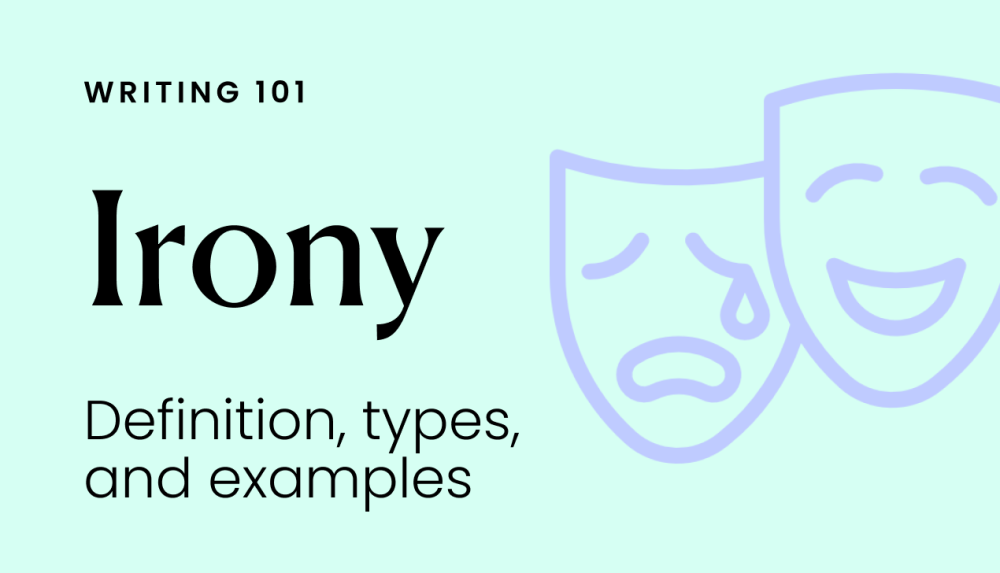
“That’s so ironic!” We’ve all probably uttered these words at some point. In fact, you probably hear “isn’t it ironic?” all the time. Irony is one of the English language’s most misused and abused words.
Irony has become synonymous with coincidence, bad luck, and pleasant surprises. But most things in life aren’t ironic .
So if coincidences, bad luck, and unusual situations aren’t, what is ironic ? Let’s track down the misused word and uncover what situations it pertains to.
Irony definition
The use of irony shows the contrast or incongruity between how things appear and how they are in reality. The remark “how ironic” indicates a meaning that’s the opposite of its precise meaning.
In an ironic phrase, one thing is said, while another thing is meant. For example, if it were a cold, rainy gray day, you might say, “What a beautiful day!” Or, alternatively, if you were suffering from a bad bout of food poisoning, you might say, “Wow, I feel great today.”
These are both examples of irony –– verbal irony, to be precise –– the most frequently used type of irony (more on that later.)
Where does the word irony come from?
Looking at irony’s origins can help with understanding how to best use the word. The word irony comes from the Latin ironia , meaning “feigned ignorance,” and previously from the Greek eironeia . Eiron, a Greek comic, was an intelligent underdog who used his wit to triumph over the egotistical character Alazon.
Since irony describes an outcome that contrasts with the originally expected results, you’ll see that writers generally use irony to build tension, create humor, or as a plot twist.
When is something not ironic?
When pinpointing the definition of irony , it can be helpful to look at when situations are incorrectly labeled as ironic . Irony is often used as a synonym for a caustic remark, something that’s interesting, or sarcastic.
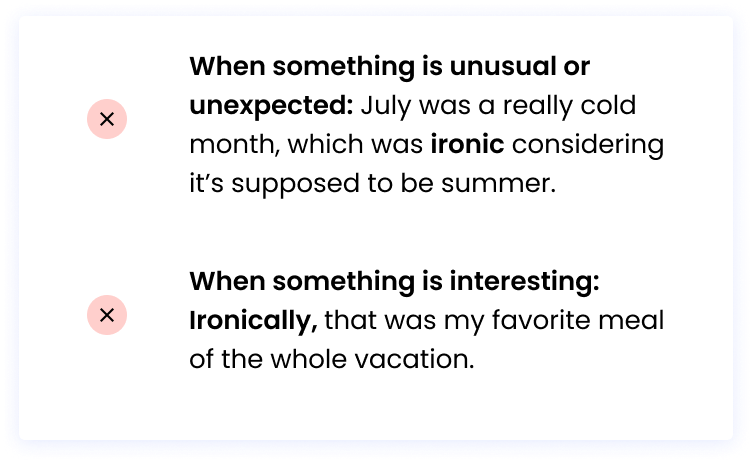
What about the song Ironic ?
Even singer Alanis Morissette got the definition wrong in her hit 1995 single “Ironic.” In fact, the criticism of her song was so strong, she had to clarify that she wasn’t technically trying to say that every line of the song was ironic.
Let’s take a closer look at Morissette’s timeless song lyrics:
It’s like rain on your wedding day,
It’s a free ride when you’ve already paid,
It’s the good advice that you just didn’t take.
While it could be considered bad luck, rain on a wedding day isn’t ironic , since it’s not as though it’s a given that every wedding day will have perfect sunny weather.
In a similar vein, a free ride when you’ve already paid or not taking good advice isn’t ironic either. The former is unusual and the latter is something that’s interesting.
Types of irony
To help you better understand irony and how to use it in your writing, we’ll dive into five different types.
Verbal irony
Verbal irony is when the intended meaning of a phrase is the opposite of what is meant. It’s a figure of speech used to emphasize the contrast in meanings. It’s often used as a way of injecting witty humor into someone’s speech or writing.
There are many English expressions that epitomize verbal irony. Here are a few:
• “Fat chance!”
• “Clear as mud”
• “As soft as concrete”
Verbal irony works best as a literary technique when the reader already knows the initial concepts. For instance, it’s common knowledge that concrete is hard, and mud is opaque.
As you might imagine, an ironic understatement creates contrast by undermining the impact of something, despite the subject itself being quite severe.
In J.D. Salinger’s novel, The Catcher in the Rye , the character Holden Caulfield says, “I have to have this operation. It isn’t very serious. I have this tiny little tumor on the brain.”
Of course, having a brain tumor is a serious health issue, which Holden downplays in this excerpt.
Alternatively, an ironic overstatement makes something insignificant sound like a bigger deal than it is to highlight how minor it is. Statements like these are figurative language and are the opposite of their literal meaning.
Say you go for a job interview, but it’s a trainwreck because you spill coffee on your brand-new suit, are 20 minutes late, and forget the interviewer’s name. Your partner asks you how it went and you say, “Aced it, best interview of my life” –– that’s an ironic overstatement.
If verbal irony sounds like it’s pretty familiar, it’s because sarcasm is actually a form of verbal irony (more on that later.)
Dramatic irony
A favorite in many famous movies and books, dramatic irony is a literary device where the reader or spectator knows critical information but the characters don’t.
One of the most famous examples of literary dramatic irony is in O. Henry’s short story, “The Gift of the Magi.” A recently married couple chooses independently to sacrifice and sell what means most to them to buy a Christmas gift for the other.
But in a twist of fate, the gifts they receive from each other are meant for the prized possessions they just sold. Although their sacrifices show the love they have for one another, the gifts they receive are actually useless.
Dramatic irony is a staple in horror movies. For example, the main character hides under the bed where the killer is hiding (the audience knows the killer is there but the protagonist doesn’t.) This form of irony is a great way of keeping the audience on the edge of their seats and building tension.
Tragic irony
In tragic irony, a subset of dramatic irony, the words, and actions of the characters contradict reality, often in a tragic or devastating way, which the readers or spectators realize.
Tragic irony came to define many ancient Greek tragedies. For instance, in Sophocles’ “Oedipus Rex,” the audience can see what Oedipus is blind to: he’s actually killing his own father.
William Shakespeare was also a fan of using tragic irony to keep the audience gripped to a compelling, often sorrowful plotline. In Romeo and Juliet , when Romeo is alerted of Juliet’s death, he assumes the tragic news to be true.
But the audience knows that Juliet has, in fact, just faked her death with the help of a potion. Romeo, on the other hand, thinks Juliet is dead and, as a result, commits suicide.
Socratic irony
Socratic irony gets its name from the moral philosopher Socrates, who would often fake ignorance to reveal someone’s misconstrued assumptions. It’s one of the more manipulative types of irony and is one way of getting information out of someone that can then be used against them later.
You might recognize socratic irony in courtroom scenes from legal dramas like Suits . Lawyers often use rhetorical tricks, like socratic irony , to get someone to confess or admit something.
Socratic irony is also perfect for comedies, too. In a classic scene from the American comedy T he Office , Michael knows that Dwight lied about going to the dentist. When Dwight returns, Michael goes for some rather ineffective rhetorical questioning to try and catch Dwight out.
Situational irony
Situational irony or the “irony of events” is when the reality contradicts an expected outcome.
In movies and literature, situational irony ensures things are unpredictable and interesting. After all, it’d be dull if the plot turned out exactly how we expected every time. It’s not how life or fictional storytelling works.
With situational irony, we learn at the same time as the characters that our expectations are different from reality.
For example in American Psycho , Patrick Bateman confesses to committing a string of murders but is laughed off. We anticipate that he’ll be punished for his crimes, but he isn’t, making it a perfect example of situational irony.
The Wonderful Wizard of Oz is another story full of examples of situational irony. Dorothy longs to go home and fulfills the wizard’s demanding list of tasks only to find out she had the ability to return home all along. The lion who appears to be a coward is actually courageous and the scarecrow who wants to be intelligent is actually a genius.
Situational irony is linked to the concept of cosmic irony –– when the universe or gods seemingly conspire for an event for its own amusement.
Cosmic irony is a subcategory of situational irony but is defined by the inclusion of a supernatural element. There’s still a situation where the reality and expectation are different but there is another element involved –– a higher power if you will. This could be god, the universe, or fate.
Remember that the “irony of events” isn’t the same as a coincidence or plain bad luck.
What’s the difference between irony and sarcasm?
Ah, “sarcasm the lowest form of wit” as the writer, Oscar Wilde, once said. While Wilde wasn’t a fan, a sarcastic jibe here and there isn’t always bad news.
People often mix up irony and sarcasm. As we touched on briefly above, sarcasm is actually a type of irony.
So the difference between sarcasm and irony is pretty small and nuanced. Once you’re clear on how sarcasm fits into irony, you won’t find yourself identifying sarcasm as irony again.
In its simplest form, irony refers to situations where the outcome is the opposite of what you or the reader expect.
If a prediction is black, then the outcome would be white. Not off-white or gray, it would have to be totally the opposite of black.
Sarcasm, on the other hand, is a form of expression that’s generally pointed at a person with the objective of criticizing or denigrating someone. Sarcasm is usually insincere speech and can have a condescending tone to it, with the purpose of insulting or embarrassing someone.
Let’s take a look at both verbal irony and sarcasm side by side:
Verbal irony — Wife saying, “What a beautiful stormy day for a swim.”
Sarcasm — Husband saying to the same wife, “The middle of the hurricane season was a great time for a vacation out here.”
See how with verbal irony, it’s ironic because the weather isn’t beautiful for swimming. Instead, the opposite is true –– it’s unpleasant and sometimes dangerous to swim during a storm.
But sarcasm is making a sneering comment about choosing to go on vacation in the middle of hurricane season. When you see the two statements together, it’s easier to see how they differ from one another.
Let’s look at some more sarcasm examples:
• After someone tells a boring or never-ending story: “That’s so fascinating.”
• After failing your driving test: “Well, that went well.”
• Self-deprecating: “ Dinner is burned, I’m such a great chef. ”
To easily differentiate between sarcasm and irony, remember that irony applies to situations while sarcasm is a form of expression. In a way, sarcasm is like irony dressed up with a sassy attitude.
Key takeaways: irony
So, that’s a wrap. Irony isn’t all that difficult to wrap your head around when you know what to look for. Ultimately, irony is just the use of words to express something that’s the opposite of the literal meaning.
When used correctly, irony helps you inject humor and wit into your writing while keeping things interesting and unexpected for the reader.
Looking to make your writing more engaging? Try a free trial with Writer today.
--> “A wide screen just makes a bad film twice as bad.” -->
May Habib CEO, Writer.com
Here’s what else you should know about Ascending.
More resources
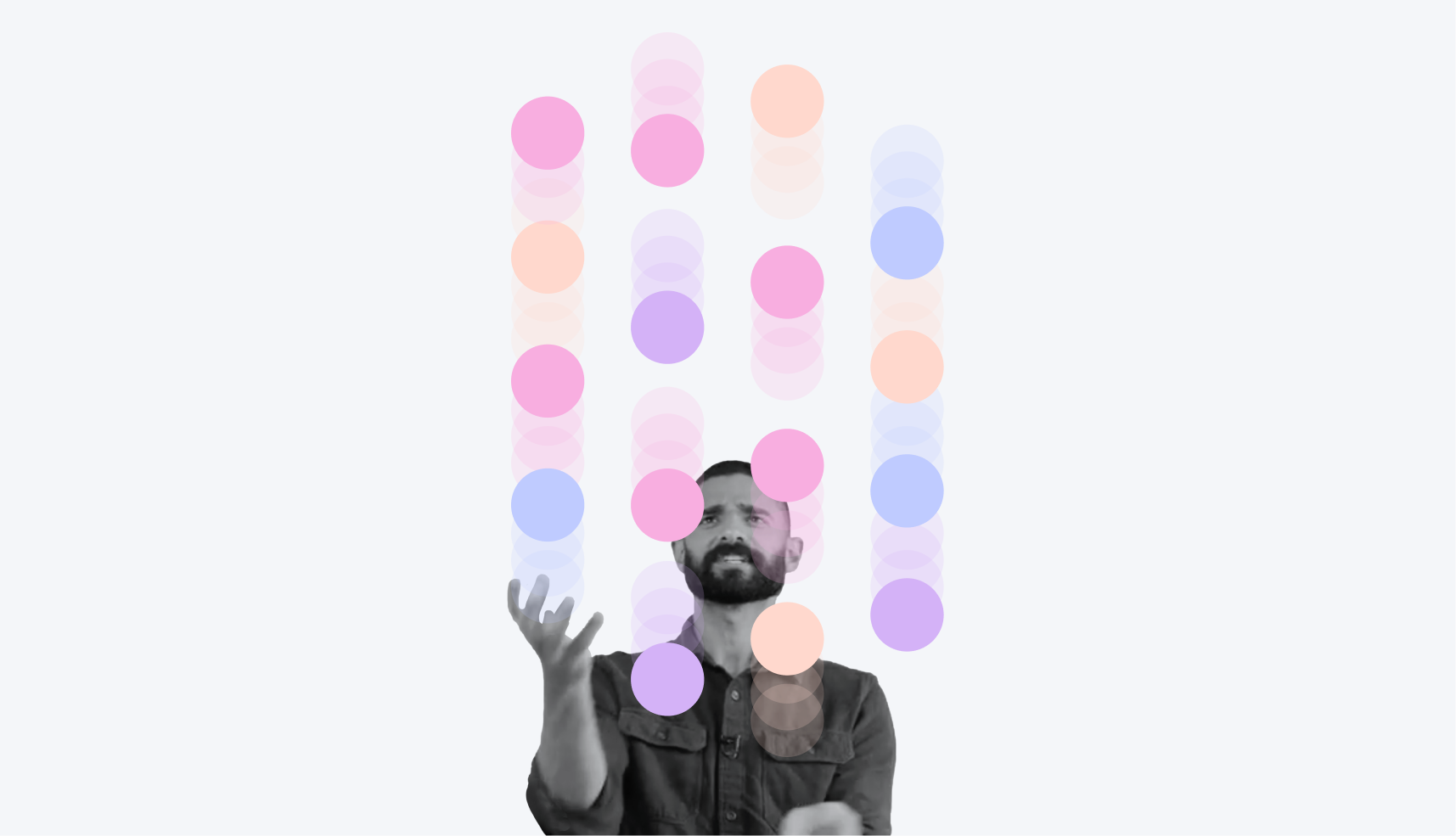
– 6 min read
How to quickly prototype a game-changing content ops strategy
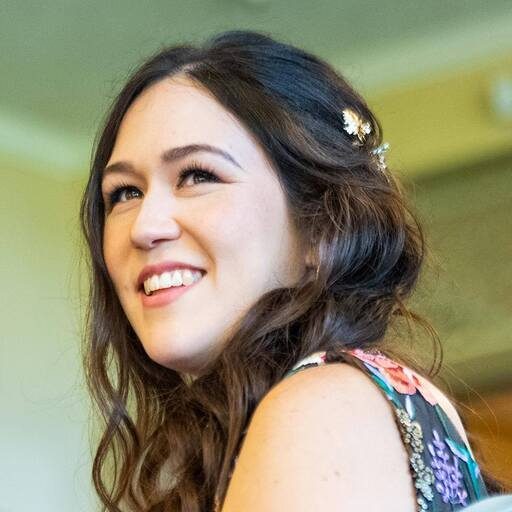
Katherine Duh
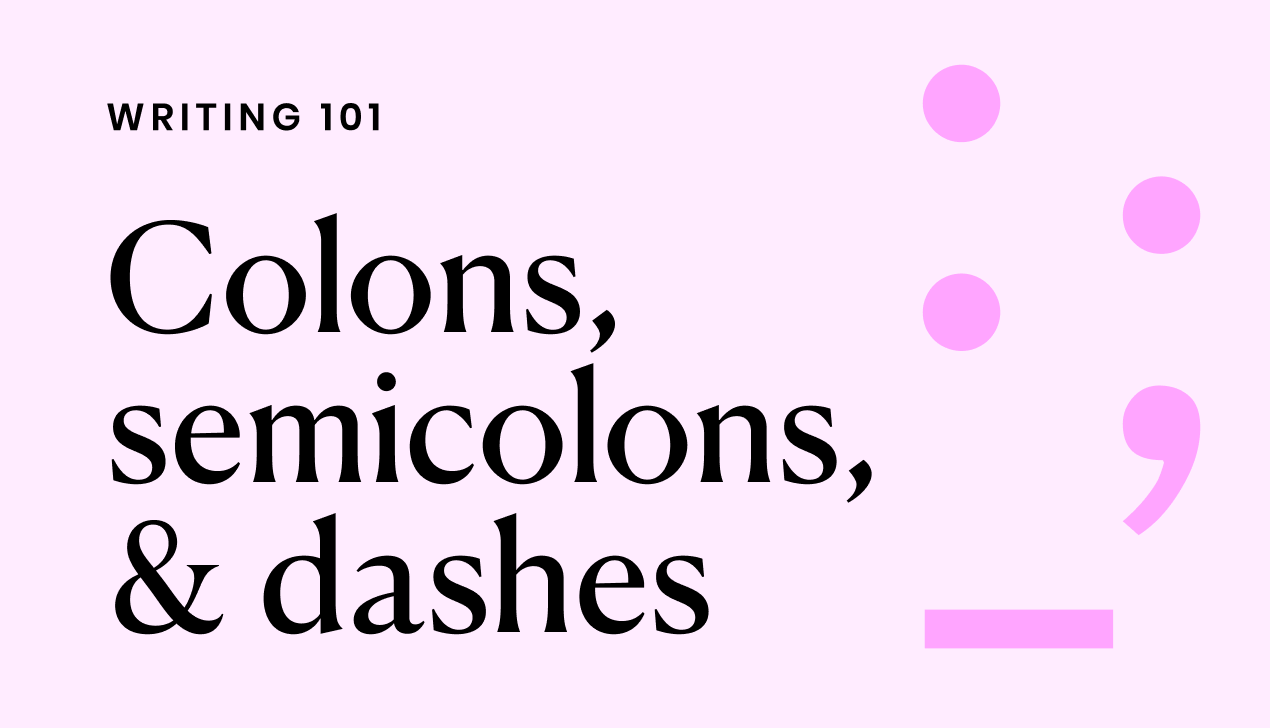
– 5 min read
How to use colons, semicolons, and dashes

Jessica Malnik
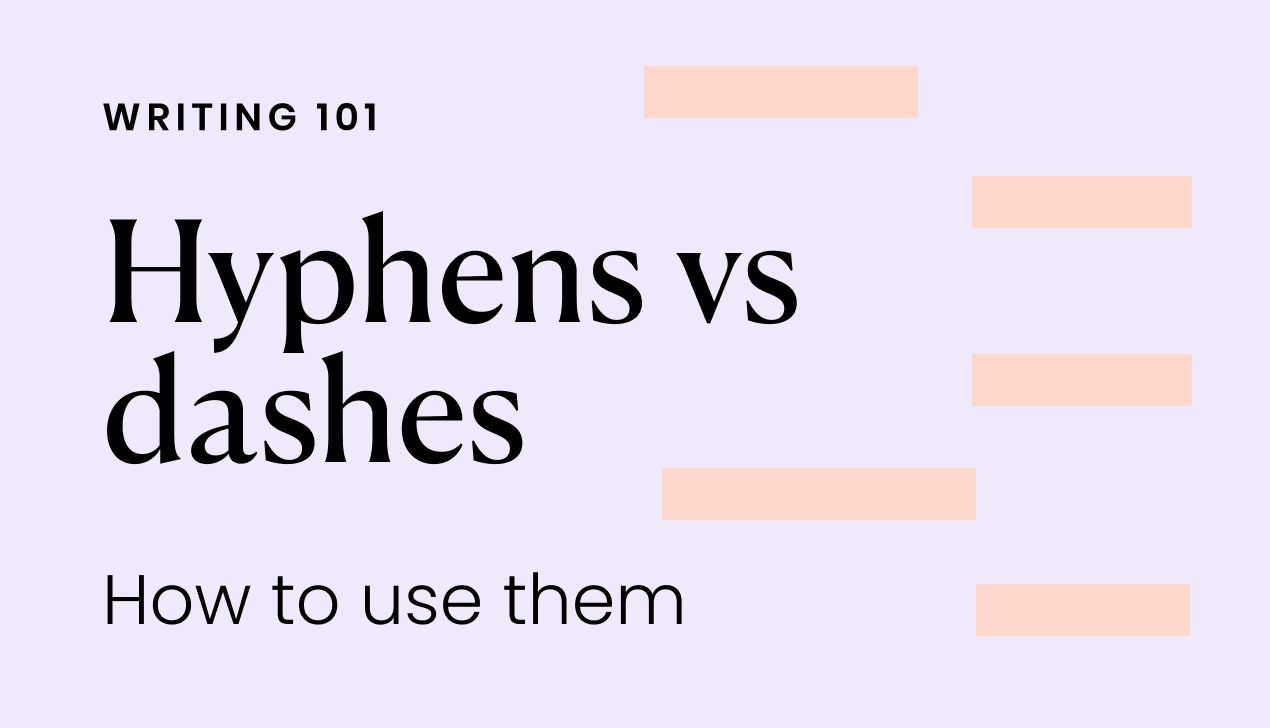
Hyphens vs. dashes: know the difference
- English Grammar
- Figures Of Speech
Irony - Definition, Types, Uses and Examples
Learning the figures of speech can help you make your writing a lot more interesting and descriptive. In this article, you will be introduced to the meaning and definition of irony, how it is formed and how it can be used. Also, check out the examples given for a clear idea of how irony works.
Table of Contents
What is irony – meaning and definition, the different types of irony, why use irony, some common examples of irony from literature, some examples of irony from movies and tv series, frequently asked questions on irony.
Irony is a rhetorical device that is used to express an intended meaning by using language that conveys the opposite meaning when taken literally. The Oxford Learner’s Dictionary defines the term ‘irony’ as “the use of words that say the opposite of what you really mean, often as a joke and with a tone of voice that shows this”.
According to the Merriam-Webster Dictionary, irony is defined as “the use of words to express something other than and especially the opposite of the literal meaning”, and according to the Collins Dictionary, irony is “a subtle form of humour which involves saying things that you do not mean”. The Cambridge Dictionary defines irony as “the use of words that are the opposite of what you mean, as a way of being funny”.
Did you know that there are various types of irony? Well, if you did, great job! Those who did not know, here is a chance to learn what they are and the ways in which they can be used.
There are three main types of irony that can be employed when you are writing a short story, a play, an anecdote or even a novel. Take a look at each of the following.
- Dramatic irony is the type in which one or more characters in a story or a play is given no idea of a very important piece of information that would alter their lives and also change the course of the plot completely. Dramatic irony keeps the readers excited and sustains the interest in the happenings of the story. It lets the audience have sympathy for the characters in the story, instils fear in them and builds suspense. In simple terms, when dramatic irony is employed, the audience knows something that the characters have not yet found out or understood. William Shakespeare is known widely for the use of dramatic irony in most of his tragic plays. Christopher Marlowe, Jane Austen, Jonathan Swift and Thomas Hardy are some of the writers who made effective use of dramatic irony in their writings.
- Situational irony is the one in which the events in the story or play give the readers a result that is different from what they had been expecting to occur. This type of irony puts the protagonist of the story/play in a situation that demands a heavy price in order to get to their goal. It also aids in creating a ‘twist’. Who doesn’t like a good twist, right? This situation would push the character to a whole new level. It can also be used to communicate an intended message or moral to the audience. O. Henry, Kate Chopin, Christopher Marlowe, Jane Austen, William Shakespeare and Guy de Maupassant are some of the writers who made good use of situational irony in their works.
- Verbal irony is when the author has put the characters’ lines in such a way that the intended meaning is the exact opposite of what is being said. Unlike the other two types of irony, when verbal irony is used, the character knows the truth but uses irony intentionally in a sarcastic manner to reveal the hidden truth. Jonathan Swift, William Shakespeare, Jane Austen, Samuel Taylor Coleridge, Edgar Allen Poe and George Bernard Shaw are known for the use of verbal irony in their works.
There are specific reasons why authors make use of a particular rhetorical device in their writing. While some of it could be to make comparisons and indicate similarities, some others might to bring focus or create a humorous effect. Authors are seen using irony for some of the reasons given below:
- The first reason behind using irony is to emphasise a point that requires attention or the one that indicates a noticeable change in the character or plot.
- The next reason would be to make the readers pause for a second and think about what the author is actually trying to convey.
- Another reason is to depict the variance between what is happening, how everything at the moment occurs and what had been expected of the characters or the plot.
- Also, to induce a tone of sarcasm through the characters’ lines or the narrator’s description.
Above all this, the success of irony is achieved only when the target audience is able to realise the difference between what is being said and what is actually occurring.
Examples of Irony
Here are a few examples of irony for your reference.
Have a look at the following examples of the three types of irony from literature.
Examples of Dramatic Irony
- In the play, ‘Othello’ by William Shakespeare, Iago tries to manipulate Othello into believing that he is an honest man.
“Othello: I think thou dost.
And for I know thou ‘rt full of love and honesty
And weigh’st thy words before thou giv’st them breath…”
- William Shakespeare applies dramatic irony in the play ‘Macbeth’ as well. In the below lines, we see King Duncan expressing his absolute trust over Macbeth who would kill him.
“He was a gentleman on whom I built an absolute trust”
- In ‘Oedipus Rex’ by Sophocles, you can see Oedipus saying that he would not fail to make sure to find who the murderer of his father is.
- “On these accounts I, as for my own father,
Will fight this fight, and follow out every clue,
Seeking to seize the author of his murder.”
Examples of Situational Irony
- Samuel Taylor Coleridge uses situational irony in his poem, ‘The Rime of the Ancient Mariner’ in the lines,
“Water, water, every where,
Nor any drop to drink.”
- In William Shakespeare’s play, ‘Romeo and Juliet’, you can see a great use of situational irony in the scene where Romeo finds Juliet lying as if dead and so kills himself. He says,
“O my love, my wife! Death, that hath sucked the honey of thy breath, Hath had no power yet upon thy beauty.”
Juliet is seen waking up later to see that Romeo had killed himself, and so kills herself too.
- ‘The Gift of the Magi’ by O. Henry has an apt example of situational irony. The characters in the story – the husband and wife are seen to sell off their priced possessions in order to get the other a gift they would love. They, however, end up buying gifts that both of them can no longer use.
Examples of Verbal Irony
- The moment anyone thinks of verbal irony, the first example that comes to mind would be Antony’s speech about Brutus being an honourable man in the play, ‘Julius Caesar’ by William Shakespeare. He is seen to describe all the good that Caesar did and establish that in spite of all that, Antony said that Caesar was ambitious and that he was an honourable man. This is done for quite some time finally letting the audience understand who was in fact behind the death of Julius Caesar.
- “I thrice presented him a kingly crown,
Which he did thrice refuse: was this ambition?
Yet Brutus says he was ambitious;
And, sure, he is an honourable man.”
- In the novel, ‘Pride and Prejudice’ by Jane Austen, Darcy’s first impression of Elizabeth Bennet was contrary to the final outcome, hence making it an instance of verbal irony. He says, “She is tolerable but not handsome enough to tempt me” , but ends up loving and marrying her in the end.
- In the play, ‘Pygmalion’ by George Bernard Shaw, you can see Mrs. Higgins using verbal irony to react to Prof. Higgins’ attitude and arrogance towards Eliza.
Higgins: ‘Don’t you dare try this game on me. I taught it to you; and it doesn’t take me in. Get up and come home; and don’t be a fool.”
Mrs. Higgins: ‘Very nicely put, indeed, Henry. No woman could resist such an invitation.”
To make learning irony a little more fun, here are a few examples of irony in some of the most-watched movies and TV series. Check out the examples below and try to analyse if you were able to see the irony in it when you watched the movie/TV series.
- In the movie Maleficent, you see Aurora going back to find Maleficent, the witch who cursed her when she was born, and developing a loving relationship with her. She, however, leaves her to go see her father and ends up in the dungeon pricking her finger on the needle and falling to eternal sleep, thereby fulfilling the curse. The whole time, the audience knows about all this and all of these events can be said to bring the effect of dramatic irony in the movie.
- Snow White is seen taking the apple that would put her into a deep sleep as the Wicked Stepmother had cursed in the movie, ‘Snow White and the Seven Dwarfs’. It is an example of dramatic irony because the audience knows all along that the apple was the cursed apple and what it would do to Snow White.
- In ‘Aladdin’, the title character is given an opportunity to make three wishes and he is found wishing to be a prince and have all the riches in the world in order to marry Jasmine, the princess. However, his wish turns out to be ironic because the princess does not seem to be in any way attracted to him because of the riches and does not want to marry him.
- In ‘F.R.I.E.N.D.S.’, the TV Series, Rachel is seen quitting her job as a waitress as she was fed up of serving coffee. Once she quits, she is so sure she does not have to serve coffee ever again. It becomes ironic when she gets a job in a field of her liking and all she has to do is serve coffee.
What is irony?
Irony is a rhetorical device that is used to express an intended meaning by using language that conveys the opposite meaning when taken literally.
What is the definition of irony?
The Oxford Learner’s Dictionary defines the term ‘irony’ as “the use of words that say the opposite of what you really mean, often as a joke and with a tone of voice that shows this”. According to the Merriam-Webster Dictionary, irony is defined as “the use of words to express something other than and especially the opposite of the literal meaning”, and according to the Collins Dictionary, irony is “a subtle form of humour which involves saying things that you do not mean”. The Cambridge Dictionary defines irony as “the use of words that are the opposite of what you mean, as a way of being funny”.
What are the types of irony?
There are three main types of irony and they are:
- Dramatic irony
- Situational irony
- Verbal irony
Give some examples of irony.
Given below are a few examples of irony that you can refer to.
Seeking to seize the author of his murder.” ( ‘Oedipus Rex’ by Sophocles)
And, sure, he is an honourable man.” (‘Julius Caesar’ by William Shakespeare)
- “She is tolerable but not handsome enough to tempt me.” (‘Pride and Prejudice’ by Jane Austen)
- “O my love, my wife! Death, that hath sucked the honey of thy breath, Hath had no power yet upon thy beauty.” (‘Romeo and Juliet’ by William Shakespeare)
- “He was a gentleman on whom I built an absolute trust.” (‘Macbeth’ by William Shakespeare)
- Share Share
Register with BYJU'S & Download Free PDFs
Register with byju's & watch live videos.

Table of Contents
Introduction.
Irony is a figure of speech where the intended meaning of words or actions is opposite to their literal or expected meaning, often creating a humorous or thought-provoking effect.
In this article, we will define this figure of speech and illustrate it with examples from literature.
Let’s start with the definition of irony!
What is irony?
Irony is a figure of speech in which there is a contradiction of expectation between what is said and what is really meant . It is characterized by an incongruity, a contrast, between reality and appearance.
An example of irony is when a fire station burns down while the firefighters are responding to a call at a neighboring building.
The term “irony” comes from the Greek word “ eironeia ,” which originally referred to a dissimulating or feigned ignorance, and later evolved to denote a contrast between appearance and reality in literature and speech.
Types of Irony
There are three types of irony: verbal , dramatic , and situational .
- It is a contrast between what is said and what is meant
- Example: During a heavy rainstorm, someone looks out the window and says, “What lovely weather we’re having!”
- It occurs when the audience or the reader knows more than the character about events. In other words, what the character thinks is true is inconsistent with what the audience knows.
- Example: In “The Green Mile”, John Coffey possesses the power to heal ailments and even resurrect the dead, yet he is unjustly accused and convicted of a heinous crime. The irony deepens as the audience witnesses this juxtaposition between Coffey’s capacity for healing and his enormous physical strength, capable of causing harm. This figure of speech becomes a powerful element in the narrative, emphasizing the complexities of human nature and challenging preconceived notions about good and evil.
- This refers to the contrast between the actual result of a situation and what was intended or expected to happen.
- A fire station catches fire while the firefighters are responding to an emergency in another part of the town.
Why Do Writers Use Irony?
Writers use irony for several reasons, as it adds depth, complexity, and nuance to their storytelling. Here are some primary reasons why writers use it:
- Enhancing Complexity: This figure of speech allows writers to introduce layers of meaning and complexity into their narratives. By juxtaposing what is expected with what actually occurs, writers create a more intricate and thought-provoking story.
- Engaging the Audience: This figure of speech captivates readers or viewers by challenging their expectations. It prompts them to think critically about the narrative, characters, and themes, fostering a deeper engagement with the material.
- Highlighting Themes: It can be a powerful tool for emphasizing themes and messages within a work. By presenting situations where the outcome is contrary to expectations, writers can underscore larger ideas or social commentary.
- Creating Humor: It is often used for comedic effect. When there is a contrast between what is said or expected and what actually happens, it can evoke laughter or amusement, adding a lighter tone to the narrative.
- Building Suspense: Dramatic irony, where the audience knows something the characters do not, can be an effective way to build suspense. This creates tension as readers eagerly anticipate the unfolding consequences of the characters’ actions.
- Challenging Assumptions: It challenges preconceived notions and societal expectations. It allows writers to subvert conventional ideas, revealing the incongruities between appearance and reality, and prompting readers to question their own beliefs.
- Conveying Critique or Satire: It is often employed in satire and social commentary. By presenting situations or characters in an ironic light, writers can critique societal norms, behaviors, or institutions in a subtle yet impactful manner.
Examples of Irony
Here are some examples of Irony with explanations:
- Explanation: This is an example of verbal irony. The phrase “clear as mud” is a figurative expression that means something is confusing or unclear. When someone says, “His argument was as clear as mud,” it’s ironic because it suggests the argument was not clear at all, contrary to what the words literally mean.
- Explanation: This is an example of situational irony. Identical twins are expected to look very similar, if not identical. However, in this situation, one twin telling the other “You’re ugly” creates an unexpected and ironic contrast, as they are genetically identical. The irony lies in the unexpected divergence from the usual expectation of identical twins looking alike.
- Explanation: This is an example of situational irony. A police station is typically a place where law enforcement is based, and it’s expected to be secure. In this situation, the fact that thieves successfully rob the police station is ironic because it goes against the usual expectations. The irony lies in the reversal of roles, where the supposed guardians of law and order become the victims of a crime.
- Explanation : The situation did not go well, but the expression suggests the opposite.
- Explanation : The praise suggests approval, but the speaker is actually expressing disapproval.
- Explanation: The statement implies frustration, but the words used suggest the opposite.
- Explanation: The situation is described as delightful, but the term “mess” contradicts this positive expression.
- Explanation: The use of “perfect” suggests approval, but the context indicates the opposite.
- Explanation: The speaker uses a positive word like “wonderful” to describe a situation usually considered negative.
- Explanation: The speaker sarcastically comments on the great weather when the reality is adverse.
- Explanation: The term “genius” is used sarcastically to highlight the opposite quality in the person.
Examples of Irony in Literature
Examples of irony are frequent in literature. The incorporation of this stylistic device in literary works adds depth, complexity, and often a layer of intrigue to storytelling. Here are some illustrative examples:
OEDIPUS Then I will start afresh, and once again shed light on darkness. It is most fitting that Apollo demonstrates his care for the dead man, and worthy of you, too. And so you’ll see how I will work with you, as is right, seeking vengeance for this land, as well as for the god. This polluting stain I will remove, not for some distant friends, but for myself. For whoever killed this man may soon enough desire to turn his hand to punish me in the same way, as well. Thus, in avenging Laius, I serve myself. But now, my children, quickly as you can stand up from these altar steps and raise your suppliant branches. Someone must call the Theban people to assemble here. I’ll do everything I can. With the god’s help this will all come to light successfully, or else will prove our common ruin. From “Oedipus Rex” by Sophocles’
Sophocles’ “ Oedipus Rex ” is an example of dramatic irony . The audience knows that Oedipus is the murderer he is trying to find, while Oedipus remains unaware of his true identity. This creates suspense and tension as the audience anticipates the tragic revelation.
“It is a truth universally acknowledged, that a single man in possession of a good fortune, must be in want of a wife.” From “Pride and Prejudice” by Jane Austin
The opening line from “ Pride and Prejudice ” by Jane Austen is an example of verbal irony . The statement begins with what seems like a universally accepted truth, but as the story unfolds, the irony becomes evident.
The novel explores the complexities of relationships and challenges the initial notion that a wealthy single man must inevitably be seeking a wife. The irony lies in the contrast between the apparent truth stated and the nuanced realities revealed in the narrative.
All of a sudden she discovered, in a black satin box, a superb diamond necklace, and her heart began to beat with an immoderate desire. Her hands trembled as she took it. She fastened it round her throat, outside her high-necked waist, and was lost in ecstasy at her reflection in the mirror. Then she asked, hesitating, filled with anxious doubt: “Will you lend me this, only this?” “Why, yes, certainly.” She threw her arms around her friend’s neck, kissed her passionately, then fled with her treasure. From “ The Necklace ” by Guy de Maupassant
“The Necklace” by Guy de Maupassant provides a good example of situational irony .
Mathilde Loisel, the main character in Guy de Maupassant’s “ The Necklace ,” borrows a diamond necklace from a friend to enhance her appearance at a luxurious ball, aiming to appear affluent. However, her plans take a tragic turn as she loses the jewels, leading to financial ruin for both her and her husband.
Ironically, in the story’s conclusion, Mathilde discovers that the jewels she sacrificed so much to replace were, in fact, fake, adding a poignant twist to the narrative.
In summary, irony is a powerful and multifaceted literary device that transcends the mere surface of words, injecting narratives with layers of complexity and depth. It can be classified into three types—verbal, dramatic, and situational—each contributing a distinct flavor to the storytelling palette.
This stylistic device adds richness to literature by challenging expectations, engaging readers through subtle twists, and offering a nuanced exploration of themes. If you incorporate irony into your writing, you will not only captivate your audience but also elevate the sophistication and impact of your narrative, fostering a more profound connection between the text and the reader.
Related Pages:
- More figures of speech
- Articles about writing

Figurative Language
Irony literary definition and meaning.
Table of Contents
What is Irony
Irony is a tough concept for many students of literature to understand. This is partly because the definition of what is and what is not ironic has been clouded by incorrect usage of the term over the years.
So what is the meaning of irony from the literary point of view? In literary circumstances, irony is the situation in which someone says or does something, but means another thing or intends for something else to happen that would be contrary to thought.
In literature, there are three main subtypes of irony. They are verbal irony, dramatic irony, and situational irony.
Three types of irony:
As irony is a very common device of figurative literature, there are different types of irony.
Verbal irony literary definition and examples
Verbal irony is the most common type of irony that a reader will come across when examining literature. In this type of irony, a character or speaker in the narrative will say or do something that is the opposite of what he means or intends.
For example, in a story, the wife of a thief might tell her husband to, “do the respectable thing and bring back some jewels tonight so that we can have food on the table tomorrow.”
This is ironic because she is encouraging her husband to steal jewels in order to sell them for money. This act is far from respectable, thus ironic.
Whether or not verbal irony is readily understood by the reader depends on the skill of the writer. It is up to the author to put the irony into context in order for the readers to understand its meaning and use.
Dramatic irony literary definition and examples
Dramatic irony is a type of irony in which the audience is aware of something that is happening in the narrative that a character in the story does not know.
An example of dramatic irony may be found in Virgil’s epic tale, the Aeneid. In the Aeneid, Virgil recounts the fall of Troy to the Greeks. The Greeks, having lain siege to Troy for a long period of time devise the Trojan Horse to sneak into the city. The Trojans take the horse into the city as a gift, which leads to their demise.
In this example, the audience knows that the Trojan Horse is full of Greek soldiers, but the Trojans do not realize this, which leads to their deaths.
Dramatic irony grabs the reader’s attention and can allow them to relate to the plight of the unknowing party, allowing them to empathize with the character or characters.
Situational irony literary definition and meaning
The final kind of irony is called situational irony. Situational irony is an incongruence in what is expected to happen and what actually takes place.
It is sometimes referred to as a twist of fate and usually has tragic consequences in literature. One example of situational irony is a pair of siblings who are separated at a young age, only to find out that they are living next door to one another after one suddenly dies.
Authors can make careful use of irony to make their writing more interesting. Verbal, dramatic, and situational irony are all tools that a writer can use to express emotion, set moods, and evoke a response from their audience.
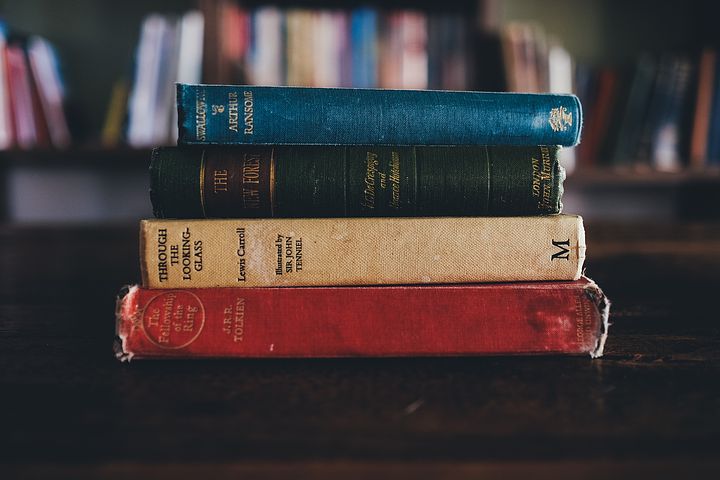
Irony Literary Definition and Meaning video
How useful was this post?
Click on a star to rate it!
Average rating / 5. Vote count:
No votes so far! Be the first to rate this post.
Related Posts

Marcus Leengen
I'm literary lover! I enjoy writing articles for FigurativeLanguage.net
- Literary Terms
- Figures of Speech
- Definition & Examples
- When & How to Use Figures of Speech
I. What are Figures of Speech?
A figure of speech is a word or phrase using figurative language—language that has other meaning than its normal definition. In other words, figures of speeches rely on implied or suggested meaning, rather than a dictionary definition. We express and develop them through hundreds of different rhetorical techniques, from specific types like metaphors and similes , to more general forms like sarcasm and slang.
Figures of speech make up a huge portion of the English language, making it more creative, more expressive, and just more interesting! Many have been around for hundreds of years—some even thousands—and more are added to our language essentially every day. This article will focus on a few key forms of figures of speech, but remember, the types are nearly endless!
III. Types of Figure of Speech
There are countless figures of speech in every language, and they fall into hundreds of categories. Here, though, is a short list of some of the most common types of figure of speech:
A. Metaphor
Many common figures of speech are metaphors. That is, they use words in a manner other than their literal meaning. However, metaphors use figurative language to make comparisons between unrelated things or ideas. The “peak of her career,” for example, is a metaphor, since a career is not a literal mountain with a peak , but the metaphor represents the idea of arriving at the highest point of one’s career.
An idiom is a common phrase with a figurative meaning. Idioms are different from other figures of speech in that their figurative meanings are mostly known within a particular language, culture, or group of people. In fact, the English language alone has about 25,000 idioms. Some examples include “it’s raining cats and dogs” when it is raining hard, or “break a leg” when wishing someone good luck.
This sentence uses an idiom to make it more interesting:
There’s a supermarket and a pharmacy in the mall, so if we go there, we can kill two birds with one stone.
The idiom is a common way of saying that two tasks can be completed in the same amount of time or same place.
A proverb is a short, commonplace saying that is universally understood in today’s language and used to express general truths. “Don’t cry over spilt milk” is a popular example. Most proverbs employ metaphors (e.g. the proverb about milk isn’t literally about milk).
This example uses a proverb to emphasize the situation:
I know you think you’re going to sell all of those cookies, but don’t count your chickens before they hatch!
Here, “don’t count your chickens before they hatch” means that you shouldn’t act like something has happened before it actually does.
A simile is a very common figure of speech that uses the words “like” and “as” to compare two things that are not related by definition. For example, “he is as tall as a mountain,” doesn’t mean he was actually 1,000 feet tall, it just means he was really tall.
This example uses a simile for comparison:
The internet is like a window to the world —you can learn about everything online!
The common phrase “window to the world” refers to a hypothetical window that lets you see the whole world from it. So, saying the internet is like a window to the world implies that it lets you see anything and everything.
E. Oxymoron
An oxymoron is when you use two words together that have contradictory meanings. Some common examples include s mall crowd, definitely possible, old news, little giant , and so on.
A metonym is a word or phrase that is used to represent something related to bigger meaning. For example, fleets are sometimes described as being “thirty sails strong,” meaning thirty (curiously, this metonym survives in some places, even when the ships in question are not sail-powered!) Similarly, the crew on board those ships may be described as “hands” rather than people.
Irony is when a word or phrase’s literal meaning is the opposite of its figurative meaning. Many times (but not always), irony is expressed with sarcasm (see Related Terms). For example, maybe you eat a really bad cookie, and then say “Wow, that was the best cookie I ever had”—of course, what you really mean is that it’s the worst cookie you ever had, but being ironic actually emphasizes just how bad it was!
IV. The Importance of Figures of Speech
In general, the purpose of a figure of speech is to lend texture and color to your writing. (This is itself a figure of speech, since figures of speech don’t actually change the colors or textures on the page!) For instance, metaphors allow you to add key details that make the writing more lively and relatable. Slang and verbal irony, on the other hand, make the writing seem much more informal and youthful (although they can have the opposite effect when misused!) Finally, other figures of speech, like idioms and proverbs, allows a writer to draw on a rich cultural tradition and express complex ideas in a short space.
V. Examples of Figures of Speech in Literature
“All the world’s a stage, and all the men and women merely players. They have their exits and their entrances, and one man in his time plays many parts.” (William Shakespeare, As You Like It)
This is one of the most famous metaphors ever crafted in the English language. Shakespeare uses his extended metaphor to persuade the audience of the similarities between the stage and real life. But rather than making his play seem more like life, he suggests that life is more like a play. His metaphor calls attention to the performative, creative, and fictional aspects of human life.
“Our words are b ut crumbs that fall down from the feast o f the mind.” (Khalil Gibran, Sand & Foam )
Gibran’s timeless metaphor succeeds for a number of reasons. For one thing, it is not a cliché – had Gibran said “words are just the tip of the iceberg ,” he would have been making roughly the same point, but in a much more clichéd way. But the feast of the mind is a highly original metaphor. In addition, it’s a successful double metaphor. The crumbs and the feast are two parts of the same image, but they work together rather than being “mixed” (see How to Use Figures of Speech ).
“If you chase two rabbits, you will lose them both.” (Russian Proverb)
Like many proverbs, this one draws on a simple metaphor of chasing rabbits. The rabbits can stand in for all sorts of objectives, from jobs to relationships, but the coded message is quite clear – focus your energy on a single objective, or you will likely fail. This literal statement, though, is quite dry and not terribly memorable, which shows the power of figures of speech.
VI. Examples of Figures of Speech in Pop Culture
The chorus to Sean Kingston’s Fire Burning contains a couple of figures of speech. First of all, there’s the word “shorty” used as a slang term (see Related Terms ) for a young woman. She may or may not be literally short, but the figure of speech applies either way (though it could easily be taken as belittling and derogatory). Second, Kingston sings the metaphor: “she’s fire, burning on the dance floor.” Hopefully this is a figure of speech and not a literal statement; otherwise, Kingston and everyone else in the club are in mortal danger!
“Oh, thanks! This is much better!” (Townspeople, South Park )
This is an example of irony. In the aftermath of Hurricane Katrina, South Park satirized the government’s response to the disaster by writing about a similar disaster in South Park. In a bumbling effort to rescue people from the floods, the authorities accidentally spill oil on the flood waters and set it on fire, making the situation far more dangerous. In response, they ironically “thank” the people responsible—their meaning is obviously the opposite of their words!
Years of talks between Washington and Havana resulted in Obama’s historic visit to Cuba on March 21st. (Patreon 2016)
This is a common form of metonym in foreign policy and news media. The capital city of a country is used as a metonym for the national government. The talks, of course, are not literally between these two cities, but between the leaders and government officials of the two countries (US and Cuba).
VII. Related Terms
Literal and figurative language.
Language is generally divided into two categories: literal, and figurative. Literal language relies on the real definition of words and phrases, or their literal meanings. Figurative language, on the other hand, relies on implied meanings, which can be understood differently depending on the location or who is using it. For example, “the sky is blue” relies on the literal definition of the word “blue,” while “I am feeling blue” relies on the figurative definition. All figures of speech rely on the use of figurative language for their meaning.
Sarcasm is mocking or bitter language that we use to express different meaning than what we say; often the exact opposite. When your intended meaning is the opposite of the literal meaning, that’s irony (another type of figure of speech), which includes common phrases like “Oh, great…” when you really mean something is bad.
Slang is language that uses atypical words and phrases to express specific meanings. It varies greatly by region, demographic, and language—for example, you would find different slang in the U.S. and in the U.K. even though they are both English speaking countries. Likewise, teenagers and the elderly will use different slang terms, as would Spanish and English. Many slang terms are figures of speech. For example, “bro” could be used to describe a friend rather than an actual brother; this would be using the word as a figure of speech.
List of Terms
- Alliteration
- Amplification
- Anachronism
- Anthropomorphism
- Antonomasia
- APA Citation
- Aposiopesis
- Autobiography
- Bildungsroman
- Characterization
- Circumlocution
- Cliffhanger
- Comic Relief
- Connotation
- Deus ex machina
- Deuteragonist
- Doppelganger
- Double Entendre
- Dramatic irony
- Equivocation
- Extended Metaphor
- Flash-forward
- Foreshadowing
- Intertextuality
- Juxtaposition
- Literary Device
- Malapropism
- Onomatopoeia
- Parallelism
- Pathetic Fallacy
- Personification
- Point of View
- Polysyndeton
- Protagonist
- Red Herring
- Rhetorical Device
- Rhetorical Question
- Science Fiction
- Self-Fulfilling Prophecy
- Synesthesia
- Turning Point
- Understatement
- Urban Legend
- Verisimilitude
- Essay Guide
- Cite This Website
Understanding Irony: Definition, Types, and Examples
What is irony, types of irony, examples of verbal irony, examples of situational irony, examples of dramatic irony, how to identify irony.
Who hasn't heard the phrase, "Well, isn't that ironic?" thrown around in casual conversation? Irony is a common term in our everyday language, yet its true meaning can often be elusive or misinterpreted. This is why the definition of irony is worth exploring. So, sit tight and prepare to gain a better understanding of this often misunderstood, but widely used literary tool.
Irony is a fascinating concept that adds depth to our language and communication. At its core, irony involves a twist or a surprise that is different from what you would usually expect. It's like when you're running late and hit every green light, but when you're early, you seem to catch every red one. That's irony for you—always playing with our expectations! Now, let's get into the specifics.
Definition of Irony
Irony is a figure of speech where words are used in a way that their intended meaning is different from their actual meaning. It may also be a situation that ends up in quite a different way than what is generally anticipated. In simple words, it is a difference between the appearance and the reality.
The Purpose of Irony
Irony serves various purposes. It can add humor to a situation, make a reader or viewer think more deeply, or shock them with an unexpected turn of events. It can also:
- Highlight a character's innocence or ignorance
- Enhance a tragic or dramatic effect
- Create a lighter tone in a serious situation
Irony in Everyday Life
You might not realize it, but you encounter irony in your everyday life. For instance, imagine you decide to skip work to go to a concert, only to find out the band also decided not to show up. That's irony! It's these little twists and turns that life throws at us that make the concept of irony so relatable.
So, now you've got a clear understanding of the definition of irony. But, did you know there are different types of irony too? Let's dive into them in the next section.
Irony is not a one-size-fits-all kind of term. Just like your favorite pair of shoes, it comes in different styles and varieties, each with its own unique characteristics. So, let's have a look at the three main types of irony: verbal, situational, and dramatic irony.
Verbal Irony
Verbal irony is when someone says one thing but means another. It's kind of like sarcasm, but not always. For instance, if it's raining cats and dogs outside and you say, "What lovely weather we're having," you're using verbal irony. Your words are opposite to the actual situation.
Situational Irony
Situational irony, on the other hand, is when the opposite of what you expect to happen, happens. It's like if a fire station were to catch fire. You'd expect a fire station of all places to be safe from fire, but the reality is quite ironic, don't you think?
Dramatic Irony
The last type, dramatic irony, is a popular device in literature and film. This is when the audience knows something that the characters in the story do not. Remember in "Romeo and Juliet" when Juliet pretends to be dead and Romeo, thinking she's actually dead, kills himself? That's a classic example of dramatic irony. We, the audience, know Juliet isn't really dead, but poor Romeo doesn't.
So, there you have it—the three main types of irony. Each type adds a unique layer of complexity to our language and storytelling. But, to get a real sense of how irony works, let's look at some examples in the next sections.
Now that you have a clear definition of irony and its types, let's dive into some examples. We'll start with verbal irony, the type of irony that is all about saying one thing and meaning another. Let's go!
"Nice Weather, Isn't It?"
Imagine you're walking home, soaking wet from a sudden downpour. A friend passes by, safe and dry under an umbrella, and quips, "Nice weather, isn't it?" That's a classic example of verbal irony. By saying the exact opposite of what's true, your friend creates a humorous and ironic situation.
"I Can't Wait to Do My Homework"
Picture this: It's Friday afternoon, and the last bell of the school day rings. Your teacher hands you a huge pile of homework for the weekend. As you stuff the papers into your backpack, you say, "I can't wait to do my homework!" Now, unless you're a true lover of homework, you're likely being ironic here. You're expressing the opposite of your true feelings, making this a perfect example of verbal irony.
"I Love Being Stuck in Traffic"
Stuck in traffic after a long day at work, you might remark to a fellow commuter, "I love being stuck in traffic." Unless you enjoy honking horns and bumper-to-bumper cars, it's likely you don't actually love it. Again, this is verbal irony because your words express the opposite of what you truly mean.
These examples show how verbal irony can add humor and complexity to our everyday conversations. But what about situational irony? Let's take a look at that next.
Let's move on to situational irony. This is when the outcome is the opposite of what you expected. As the definition of irony goes, it's all about that unexpected twist! Here are a few examples to paint a clearer picture.
The Fire Station Burns Down
Imagine a scenario where a fire station—yes, the place that's supposed to prevent and put out fires—catches fire and burns to the ground. That's situational irony right there. You'd expect a fire station to be the last place to burn down, but the unexpected has happened, creating a deeply ironic situation.
The Lifeguard Can't Swim
Now, picture this: a lifeguard who can't swim. Sounds crazy, right? But that's exactly what makes it an example of situational irony. We expect lifeguards to be excellent swimmers, ready to save lives at a moment's notice. If they can't swim, that's the complete opposite of what we expect—hence, it's ironic.
The Teacher Fails the Test
Lastly, consider a teacher who fails a test in their own subject. Teachers are supposed to know their subjects inside out, so them failing a test would be a surprising and ironic situation. It flips our expectations upside down, making it a perfect example of situational irony.
These examples should help you see how situational irony can create unexpected and interesting scenarios. Now, let's move on to dramatic irony, another fascinating facet of this literary device.
Now that we've covered situational irony, let's dive into dramatic irony. This form of irony occurs when the audience knows something that the characters in a story don't, creating tension and suspense. Here are a few examples:
Romeo and Juliet
One of the classic examples of dramatic irony comes from Shakespeare's "Romeo and Juliet". In the play, Juliet takes a potion to appear dead so she can run away with Romeo. However, Romeo doesn't know about the plan and thinks Juliet is truly dead. The audience, on the other hand, knows Juliet isn't dead, creating a painful sense of dramatic irony as we watch Romeo's reaction.
The Truman Show
In the film "The Truman Show", Truman lives in a reality TV show but doesn't know it. The audience, however, is aware of the truth, which makes Truman's obliviousness a clear example of dramatic irony. His everyday actions, innocent of the reality, create a sense of tension and suspense that defines the film.
Little Red Riding Hood
In the traditional fairy tale "Little Red Riding Hood", the reader knows that the wolf has dressed up as Little Red Riding Hood's grandmother. However, Little Red Riding Hood herself doesn't know this. The tension that builds as we wait for her to find out is a perfect example of dramatic irony.
So, there you have it—dramatic irony in a nutshell! It adds an element of suspense and makes stories more engaging. Now, let's learn how to identify irony in its many forms.
Irony can often be tricky to spot, especially when it's used subtly. But don't worry, with a bit of practice and the right tools, you'll become an irony-detecting wizard in no time. Let's get started:
Context is Key
When trying to identify irony, it's important to take the context into account. Irony often involves a discrepancy between what's expected and what actually happens. So, if the outcome is different from what you anticipated, you might just have stumbled upon an irony.
Look for Contradictions
Irony often involves contradictions. In verbal irony, for example, a person might say one thing but mean just the opposite. So, if the words don't match the actions or the situation, you're likely dealing with irony.
Consider the Audience's Knowledge
In dramatic irony, the audience or reader has information that the characters do not. If you find yourself knowing more than the characters in a story and that knowledge creates a tension or surprise, you've likely found dramatic irony.
And that wraps up our guide on how to identify irony! It might seem a bit daunting at first, but remember, practice makes perfect. So, next time you're reading a book or watching a movie, keep an eye out for these telltale signs of irony. You'll be amazed at how it can add depth and complexity to the story.
While understanding irony is essential for any creative, it's also crucial to explore other aspects of your craft. If you're a photographer looking to dive deeper into how your identity can inform your practice, check out ' How Identity Can Inform Your Photography Practice ' by Ryan Prince. This workshop will help you to develop a more authentic and personal approach to your photography work.

Live classes every day
Learn from industry-leading creators
Get useful feedback from experts and peers
Best deal of the year
* billed annually after the trial ends.
*Billed monthly after the trial ends.

Figure of Speech

Figure of Speech Definition
What is a figure of speech? Here’s a quick and simple definition:
A figure of speech is a literary device in which language is used in an unusual—or "figured"—way in order to produce a stylistic effect. Figures of speech can be broken into two main groups: figures of speech that play with the ordinary meaning of words (such as metaphor , simile , and hyperbole ), and figures of speech that play with the ordinary arrangement or pattern in which words are written (such as alliteration , ellipsis , and antithesis ).
Some additional key details about figures of speech:
- The ancient Greeks and Romans exhaustively listed, defined, and categorized figures of speech in order to better understand how to effectively use language. The names of most figures of speech derive from the original Greek or Latin.
- Figures of speech that play with the literal meaning of words are called tropes , while figures of speech that play with the order or pattern of words are called schemes .
- Figures of speech can take many forms. A figure of speech can involve a single word, a phrase, an omission of a word or phrase, a repetition of words or sounds, or specific sentence structures.
Figure of Speech Pronunciation
Here's how to pronounce figure of speech: fig -yer of speech
Figures of Speech vs. Figurative Language
There's a lot of confusion about the difference between the terms "figures of speech" and " figurative language ." Most of the confusion stems from the fact that different people often use "figurative language" to mean slightly different things. The two most common (and most acceptable) definitions of figurative language are:
- Figurative language refers to any language that contains figures of speech. According to this definition, figurative language and figures of speech are not quite the same thing, but it's pretty darn close. The only difference is that figures of speech refer to each specific type of a figure of speech, while figurative language refers more generally to any language that contains any kind of figures of speech.
- Figurative language refers to words or expressions that have non-literal meanings : This definition associates figurative language only with the category of figures of speech called tropes (which are figures of speech that play with the literal meaning of words). So according to this definition, figurative language would be any language that contains tropes, but not language that contains the figures of speech called schemes.
You might encounter people using figurative speech to mean either of the above, and it's not really possible to say which is correct. But if you know about these two different ways of relating figurative language and figures of speech, you'll be in pretty good shape.
Figures of Speech, Tropes, and Schemes
The oldest and still most common way to organize figures of speech is to split them into two main groups: tropes and schemes.
- Tropes are figures of speech that involve a deviation from the expected and literal meaning of words.
- Schemes are figures of speech that involve a deviation from the typical mechanics of a sentence, such as the order, pattern, or arrangement of words.
The scheme/trope classification system is by no means the only way to organize figures of speech (if you're interested, you can find all sorts of different categorization methods for figures of speech here ). But it is the most common method, and is both simple and structured enough to help you understand figures of speech.
Generally, a trope uses comparison, association, or wordplay to play with the literal meaning of words or to layer another meaning on top of a word's literal meaning. Some of the most commonly used tropes are explained briefly below, though you can get even more detail on each from its specific LitCharts entry.
- Metaphor : A metaphor is a figure of speech that makes a comparison between two unrelated things by stating that one thing is another thing, even though this isn't literally true. For example, if someone says "it's raining cats and dogs," this obviously doesn't literally mean what it says—it's a metaphor that makes a comparison between the weight of "cats and dogs" and heavy rain. Metaphors are tropes because their effect relies not on the mechanics of the sentence, but rather on the association created by the use of the phrase "cats and dogs" in a non-literal manner.
- Simile : A simile, like a metaphor, makes a comparison between two unrelated things. However, instead of stating that one thing is another thing (as in metaphor), a simile states that one thing is like another thing. To stick with cats and dogs, an example of a simile would be to say "they fought like cats and dogs."
- Oxymoron : An oxymoron pairs contradictory words in order to express new or complex meanings. In the phrase "parting is such sweet sorrow" from Romeo and Juliet , "sweet sorrow" is an oxymoron that captures the complex and simultaneous feelings of pain and pleasure associated with passionate love. Oxymorons are tropes because their effect comes from a combination of the two words that goes beyond the literal meanings of those words.
- Hyperbole : A hyperbole is an intentional exaggeration of the truth, used to emphasize the importance of something or to create a comic effect. An example of a hyperbole is to say that a backpack "weighs a ton." No backpack literally weighs a ton, but to say "my backpack weighs ten pounds" doesn't effectively communicate how burdensome a heavy backpack feels. Once again, this is a trope because its effect comes from understanding that the words mean something different from what they literally say.
Other Common Tropes
- Antanaclasis
- Onomatopoeia
- Personification
- Periphrasis
- Rhetorical Question
Schemes are mechanical—they're figures of speech that tinker with words, sounds, and structures (as opposed to meanings) in order to achieve an effect. Schemes can themselves be broken down in helpful ways that define the sort of tinkering they employ.
- Repetition: Repeating words, phrases, or even sounds in a particular way.
- Omission: Leaving out certain words or punctuation that would normally be expected.
- Changes of word order: Shifting around words or phrases in atypical ways.
- Balance: Creating sentences or phrases with equal parts, often through the use of identical grammatical structures.
Some of the most commonly used schemes are explained briefly below, though you can get even more detail on each from its specific LitCharts entry.
- Alliteration : In alliteration, the same sound repeats in a group of words, such as the “b” sound in: “ B ob b rought the b ox of b ricks to the b asement.” Alliteration uses repetition to create a musical effect that helps phrases to stand out from the language around them.
- Assonance : A scheme in which vowel sounds repeat in nearby words, such as the "ee" sound in the proverb: "the squ ea ky wh ee l gets the gr ea se." Like alliteration, assonance uses repeated sounds to create a musical effect in which words echo one another—it's a scheme because this effect is achieved through repetition of words with certain sounds, not by playing with the meaning of words.
- Ellipsis : The deliberate omission of one or more words from a sentence because their meaning is already implied. In the example, "Should I call you, or you me?" the second clause uses ellipsis. While its implication is "or should you call me," the context of the sentence allows for the omission of "should" and "call." Ellipsis is a scheme because it involves an uncommon usage of language.
- Parallelism : The repetition of sentence structure for emphasis and balance. This can occur in a single sentence, such as "a penny saved is a penny earned," and it can also occur over the course of a speech, poem, or other text. Parallelism is a scheme because it creates emphasis through the mechanics of sentence structure, rather than by playing with the actual meanings of words.
Other Common Schemes
- Anadiplosis
- Antimetabole
- Brachylogia
- Epanalepsis
- Parenthesis
- Polysyndeton
Figure of Speech Examples
Figures of speech can make language more inventive, more beautiful, more rhythmic, more memorable, and more meaningful. It shouldn't be a surprise, then, that figures of speech are plentiful in all sorts of written language. The examples below show a variety of different types of figures of speech. You can see many more examples of each type at their own specific LitChart entries.
Figures of Speech Examples in Literature
Literature is riddled with figures of speech because figures of speech make language colorful and complex.
Metaphor in Daphne du Maurier's Rebecca
On and on, now east now west, wound the poor thread that once had been our drive. Sometimes I thought it lost, but it appeared again, beneath a fallen tree perhaps, or struggling on the other side of a muddied ditch created by the winter rains.
In this quote from Rebecca , Daphne du Maurier refers to a washed-out road as "the poor thread." This is a metaphor —and a trope—because the writer indirectly compares the thread to the road and expects that readers will understand that "thread" is not used literally.
Parallelism in Charles Dickens' A Tale of Two Cities
It was the best of times, it was the worst of times, it was the age of wisdom, it was the age of foolishness, it was the epoch of belief, it was the epoch of incredulity, it was the season of Light, it was the season of Darkness, it was the spring of hope, it was the winter of despair, we had everything before us, we had nothing before us, we were all going direct to Heaven, we were all going direct the other way.
In the famous opening line of A Tale of Two Cities , Dickens uses parallelism —a scheme in which parts of a sentence repeat—in order to emphasize the contradictions of the time in which the book is set. Dickens has manipulated his sentence structure so that the parallel clauses emphasize the oppositional nature of his words ("it was the best of times, it was the worst of times"). The figure of speech doesn't play with the meaning of words, it emphasizes them through structure and repetition, which is why it is a scheme.
Alliteration in Nathaniel Hawthorne's "The Birthmark"
In this manner, s electing it as the s ymbol of his wife's liability to s in, s orrow, d ecay, and d eath, Aylmer's s ombre imagination was not long in rendering the birthmark a frightful object, causing him more trouble and horror than ever Georgiana's beauty, whether of s oul or s ense, had given him delight.
This passage from " The Birthmark " uses alliteration to tie together all of the things that Georgiana's birthmark is supposed to symbolize. By using words that alliterate—"sin and sorrow" and "decay and death," for example—Hawthorne is making the reader feel that these ideas are connected, rather than simply stating that they are connected. Alliteration is a figure of speech—a scheme—because it uses the mechanics of language to emphasize meaning.

Verbal Irony in Shakespeare's Julius Caesar
For Brutus is an honorable man; So are they all, all honorable men,
This quote from Julius Caesar comes from Marc Antony's speech at Caesar's funeral. Antony needs to hold Brutus and his conspirators accountable for Caesar's death without contradicting the crowd's positive impression of Brutus, so Antony uses verbal irony to simultaneously please and trouble the crowd. On the surface, Antony says what the audience wants to hear (that Brutus is honorable), but it becomes clear over the course of his speech that he means the opposite of what he says (and over time he convinces the audience to believe this opposite meaning as well). This is a figure of speech (a trope) because it's based on a play on the meaning of Antony's words.
Figures of Speech Examples in Music
Figures of speech are also common in music. Schemes fit naturally with songs because both schemes and songs manipulate sound and rhythm to enhance the meanings of words. Music also uses many tropes, because using words that have meanings beyond their literal ones makes language more interesting, and it allows songwriters to create music that uses just a few words to imply a complex meaning.
Assonance and Metaphor in Rihanna's "Diamonds"
So sh ine br igh t ton igh t, you and I We're beautiful l i ke d i amonds in the sk y Eye to eye , so al i ve We're beautiful l i ke d i amonds in the sk y
Rihanna uses assonance when she repeats the " eye " sound throughout the chorus of "Diamonds." This make the words echo one another, which emphasizes the similarity between the singer, the person she's talking about, and the "diamonds in the sky" to which she's comparing them both. Assonance is a scheme because it's using the sound of words—not their meaning—to draw a parallel between different things.
Rihanna also uses the phrase "Diamonds in the sky" as a metaphor for stars. This is a trope—a phrase that means something other than what it literally says—as Rihanna obviously doesn't think that there are actually diamonds in the sky. This verse is a good example of how figures of speech can often work together and overlap. In this case, the metaphor that allows her to use "diamonds" instead of "stars" also fits into her use of assonance (because "stars" lacks the "eye" sound).
Personification in Green Day's "Good Riddance"
Another turning point, a fork stuck in the road Time grabs you by the wrist, directs you where to go
While the first line of this song uses "a fork stuck in the road" as a metaphor for a choice, the more arresting figure of speech at work here is the personification of time in the second line. By giving "time" human characteristics—the ability to grab a person and tell them where to go—Green Day is helping listeners to make sense of the power that time has over people. This is a trope because the line doesn't mean what it literally says; instead, it's asking listeners to make a comparison between the characteristics of time and the characteristics of a person.
Anastrophe in Public Enemy's "Fight the Power"
Straight up racist that sucker was Simple and plain
In the line "Straight up racist that sucker was," Public Enemy uses anastrophe (which is the inversion of typical word order) to preserve the rhythm of the verse. Instead of saying "That sucker was straight up racist," Public Enemy chooses an odd phrasing that has one stressed syllable followed by two unstressed syllables— " ra cist that su cker was/ Sim ple and plain ." This way, the beat falls more regularly across those two lines, which allows the rapper to make his point (that Elvis was racist) without the flow sounding awkward. Since anastrophe manipulates the order of words in order to achieve a rhythmic effect, it's a scheme.
Why Do Writers Use Figures of Speech?
Figures of speech is a category that encompasses a broad variety of literary terms, so it's difficult to give one answer to this question. Writers use different figures of speech to achieve different effects.
Schemes (figures of speech that manipulate sound, syntax, and word order) can make language more beautiful, persuasive, or memorable. Writers can use schemes to draw attention to an important passage, to create a sound that mirrors (or contrasts with) the meaning of words, or to give language a rhythm that draws the reader in. As schemes tend to work through sound and rhythm, they generally produce a visceral effect, or an effect felt in the body—broadly speaking, schemes are more sensory than intellectual.
In contrast, writers use tropes to grab the reader intellectually by adding complexity or ambiguity to an otherwise simple word or phrase. Tropes can ask the reader to make a comparison between two unlike things, they can impose human qualities on nonhumans, and they can mean the opposite of what they say. Tropes engage the intellect because the reader has to be alert to the fact that tropes do not use language at face value—a trope never means what it literally says.
All figures of speech help a writer to communicate ideas that are difficult to say in words or that are more effectively communicated non-verbally. This could be by repeating harsh consonants to create a scary atmosphere, or by using a metaphor to impose the qualities of something concrete (say, a rose) onto something more difficult to define (say, love). In general, figures of speech attempt to bring out a reader's emotion and to capture their attention by making language more colorful, surprising, and complex.
Other Helpful Figure of Speech Resources
- Silva Rhetoricae on Figures of Speech : An excellent reference from BYU that explains the various ways that figures of speech have been categorized over history, including into schemes and tropes.
- Silva Rhetoricae on schemes and tropes :
- The Oxford Reference Page for Figure of Speech : A helpful definition of figures of speech in the context of the ancient study of rhetoric (did you know that the Roman rhetorician Quintillian defined "figure of speech" in 95 AD?)
- What Are Tropes in Language? Skip to the "Distinction Between Figures and Tropes" section and read to the end—full of informative and thought-provoking discussion about tropes.
- A YouTube video about tropes and schemes with pop culture examples.
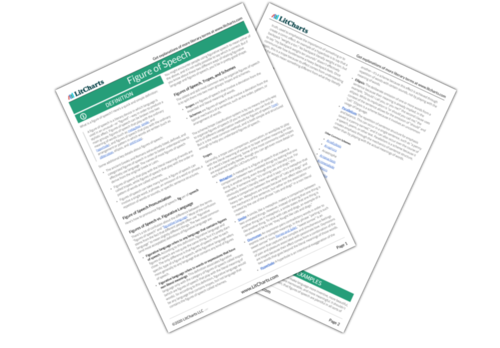
- PDFs for all 136 Lit Terms we cover
- Downloads of 1924 LitCharts Lit Guides
- Teacher Editions for every Lit Guide
- Explanations and citation info for 40,556 quotes across 1924 books
- Downloadable (PDF) line-by-line translations of every Shakespeare play
- Alliteration
- Climax (Figure of Speech)
- Figurative Language
- Parallelism
- Verbal Irony
- Round Character
- Rising Action
- Extended Metaphor
- Juxtaposition
- Internal Rhyme
- Colloquialism
- Dynamic Character
- External Conflict
- Falling Action
- Point of View

VIDEO COURSE
Finish your draft in our 3-month master class. Sign up now to watch a free lesson!
Learn How to Write a Novel
Finish your draft in our 3-month master class. Enroll now for daily lessons, weekly critique, and live events. Your first lesson is free!
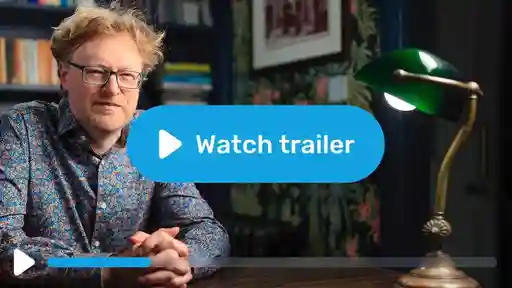
Guides • Perfecting your Craft
Posted on Sep 02, 2022
Verbal Irony: 9 Examples that Will Make You Smirk
Verbal irony is a figure of speech in which the literal meaning of what someone is saying is different from what they really mean. For example, someone saying “Just what I needed”, after spilling coffee on their shirt on the way to an important meeting. It is often used to make a point or to express sarcasm, both in literature and in everyday conversation. It can also be used to bring humor to a situation, foreshadow events, or express frustration.
For a better grasp of this type of humor, here are some examples of verbal irony from popular culture:
“Your stunned silence is very reassuring” — Monsters, Inc
Roz (flatly): Hello Wazowski. Fun filled evening plans for tonight? Mike Wazowski: Well, as a matter of fact — Roz: — and I’m sure you filed your paperwork correctly. For once. (pause) Roz: Your stunned silence is very reassuring.
In Monsters Inc, scare assistant Mike Wazowski tries to leave work without dropping off his paperwork for the day. Unfortunately for Mike, this involves slipping past Roz, the intimidating administrator of ‘Scare Floor F.’ Her dry and deadpan line of questioning, which drips with irony, immediately establishes her place within the company as a terrifying authority figure who terrifies Mike. Of course, Mike’s instincts aren’t too far off, as Roz later reveals herself to be more than meets the eye(!).
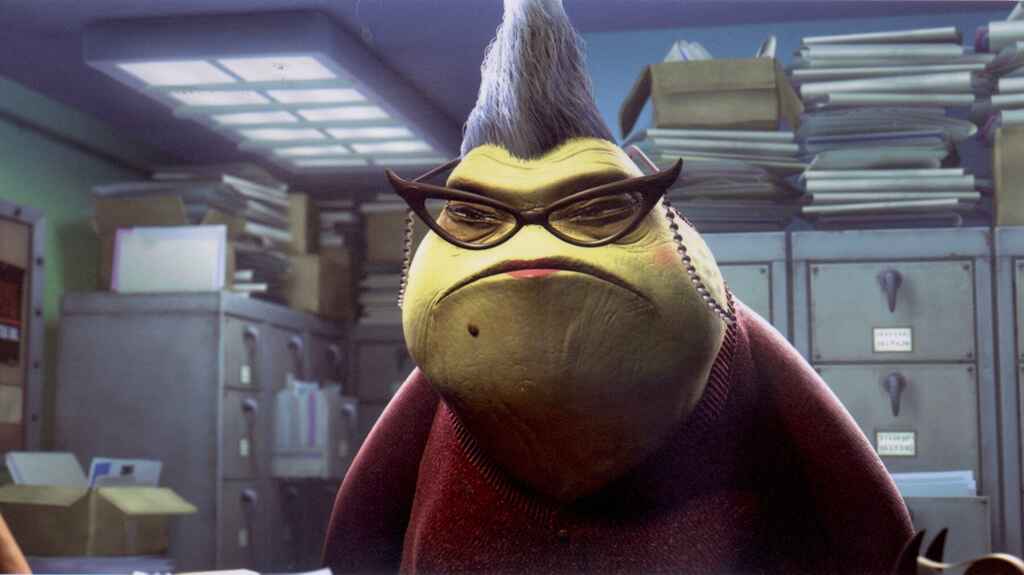
“And Brutus is an honourable man” — Julius Caesar
“Here, under leave of Brutus and the rest– For Brutus is an honourable man; So are they all, all honourable men– Come I to speak in Caesar’s funeral. He was my friend, faithful and just to me: But Brutus says he was ambitious; And Brutus is an honourable man.”
In Shakespeare's Julius Caesar , Caesar has just been murdered by a band of conspirators that includes his ally, Marcus Brutus. Brutus makes an appeal to the people of Rome to justify the killing — saying that his cohorts were, in fact, protecting Rome from Caesar’s ambitions. Brutus briefly wins the crowd’s support until Caesar’s close friend, Mark Anthony, stands to make his famous “Friends, Romans, countrymen” speech.
In his address, Mark Anthony repeatedly calls the conspirators “honourable men” — the irony of which is not lost on the crowd. He singles out Brutus’s justification that Caesar was “ambitious” — and hits home just how weak a reason this was to kill a man. But who are we to argue with Brutus? After all, he is an “honourable man.” But Mark Anthony’s ironic implications are enough to turn the tide of support.
Which famous author do you write like?
Find out which literary luminary is your stylistic soulmate. Takes one minute!
“Say Yes to Knope!” — Parks and Recreation
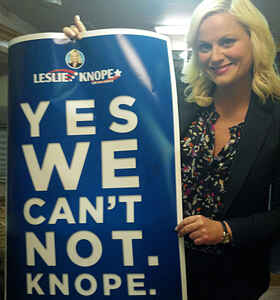
"Yes we can’t not. Knope."
Fiction is packed full of people whose names are the polar opposites of their characters — an irony that often serves to highlight that particular trait. In Parks and Recreation, the city’s irrepressibly positive parks administrator is curiously named Leslie Knope (pronounced ‘nope’). This contradiction was strategically deployed for laughs over the show’s seven seasons, culminating in a real-world billboard for Leslie’s campaign: “KNOPE WE CAN IN 2012”.
Other characters with ironic names include the man-mountain Little John from Robin Hood, Waiting for Godot ’s beleaguered slave character (called "Lucky"), and the perpetually ill and lethargic Captain Keene in the Hornblowers series.
"The dead man very considerately got up...” — The Sign of the Four
“What do you think of this, Holmes? Sholto was, on his own confession, with his brother last night. The brother died in a fit, on which Sholto walked off with the treasure. How's that?" "On which the dead man very considerately got up and locked the door on the inside." "Hum! There's a flaw there.”
The most accomplished forensic mind of the Victorian age, Sherlock Holmes is not known for his patience with lesser detectives. When police inspector Athenley Jones overlooks a key detail in examining a crime scene, Holmes resorts to a quick barb to set Jones straight. This use of verbal irony in The Sign of the Four (where he supposes that a dead man has locked a room from the inside) not only reveals Holmes’s cutting demeanor — but also nods his signature use of deductive reasoning: “When you have eliminated all which is impossible, then whatever remains, however improbable, must be the truth.” And in this particular case, as in real life, walking corpses are still in the realm of the impossible.
📚 Sound like something you want to read more of? Check out our comprehensive guide to the Sherlock Holmes books .
“It’s so good to see you too!” — She’s the Man
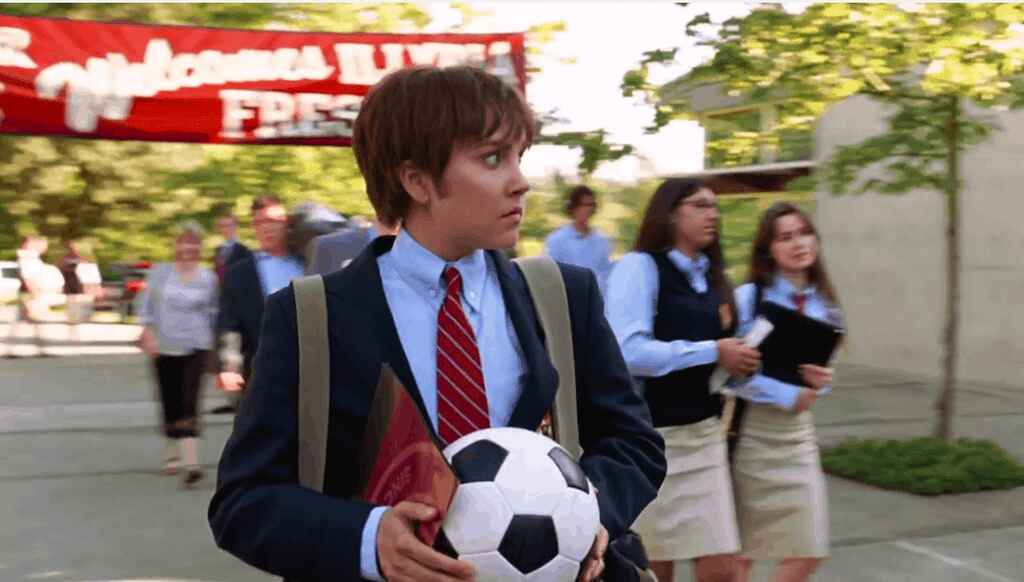
Monique: (running up behind Viola) Sebastian! Monique whips Viola around, by pulling on her loose-fitting sport jacket. Monique: Ew, it’s you. God, you and your brother look scary alike from the back. I think it’s your total lack of curves Viola: Hi Monique, it’s so good to see you too!
When your brother’s girlfriend accidentally mistakes you for him, you’d think she’d apologize or something — instead of adding insult to injury. Well, when this happens to the heroine of She’s The Man (a modern spin on Shakespeare’s Twelfth Night ), Viola cuts back at her brother’s vapid girlfriend with a thickly sarcastic, “it’s so good to see you too.” This response reveals a lot about Viola's confident, sassy personality.
In another twist of irony, Monique’s insult gives Viola a solution to her biggest problem: she’s going to pose as a boy so she can join the school soccer team!
“A stranger to one of your parents” — Pride and Prejudice
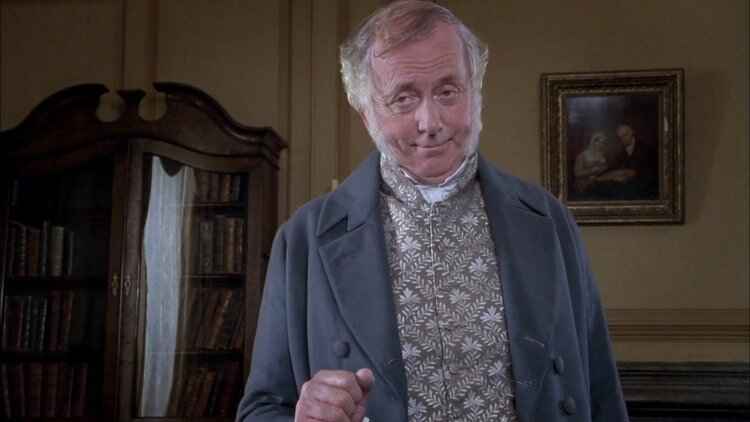
“An unhappy alternative is before you, Elizabeth. From this day you must be a stranger to one of your parents. Your mother will never see you again if you do not marry Mr. Collins, and I will never see you again if you do.”
Lizzie Bennet, of Austen's Pride and Prejudice , finds herself in a tough spot. Her mother wishes for her to marry the insipid Mr. Collins — the heir to her family home — thereby securing the Bennet clan’s future. For the independent and intelligent Lizzie, this future seems as inevitable as it is horrible — until her father finally pipes up.
While he usually leaves all decisions of society and marriage to his over-enthusiastic wife, Mr. Bennett finally decides to speak up against this marital arrangement. While, at face value, Mr. Bennett’s ultimatum makes it sound like he just doesn’t want to spend more time with Mr. Collins than necessary, the reader understands this to be his way of showing support and affection for his favorite daughter.
“And that has made all the difference” – The Road Not Taken
"I shall be telling this with a sigh Somewhere ages and ages hence: Two roads diverged in a wood, and I— I took the one less traveled by, And that has made all the difference."
We often needlessly sweat over the tiny choices in life: this is the point ultimately made by the narrator of Frost’s “The Road Not Taken,” a poem commonly misread as a celebration of individualism and the adventurous spirit. Oh, the irony!
Faced with a choice between two diverging roads, our hero seems proud that he took the road ‘less traveled by.' He soon realizes that it was pretty much the same once he’d trod through it. In the final stanza, he imagines himself telling others that this choice has ‘made all the difference’ — but his sigh lets us know otherwise! While the path you choose (or the choices you make) might slightly change the journey, in the end, will it have made a difference at all?
“Some animals are more equal than others.” – Animal Farm
"There was nothing there now except a single Commandment. It ran: ALL ANIMALS ARE EQUAL BUT SOME ANIMALS ARE MORE EQUAL THAN OTHERS After that it did not seem strange when next day the pigs who were supervising the work of the farm all carried whips in their trotters."
The pigs in George Orwell's Animal Farm set out with pure intentions to create an egalitarian society amongst the barnyard animals. However, they slowly grew power hungry and ironically ended up establishing a dictatorship even worse than the former humans who ruled them. While the statement starts by saying ‘all animals are equal,' it goes on to say that ‘some are more equal than others,’ defeating the entire premise laid down in the first part of the statement. This highlights the hypocrisy of the pigs, whose previously secret disdain for other animals is now writ large.
“Vintage, so adorable.” – Mean Girls
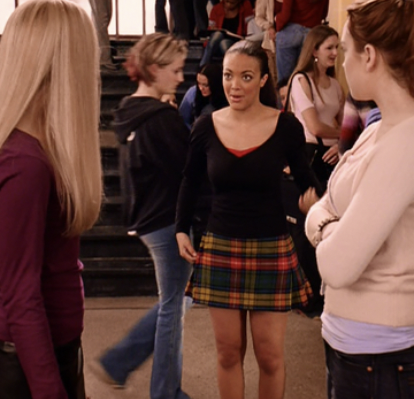
Regina: Oh my God, I love your skirt! Where did you get it? Lea Edwards: It was my mom's in the '80s. Regina: Vintage, so adorable. Lea Edwards: Thanks! (Lea leaves) Regina (quietly, to Cady): That is the ugliest effing skirt I've ever seen.
In line with her status as Queen Bee, Regina George gives another girl the ultimate stamp of approval by telling her, apropos of nothing, that she loves her skirt. However, she doesn’t mean one word of her compliment — this secretly sarcastic comment was a status play designed to show new girl Cady Heron the power and influence she wields at this high school.
Ready for more irony? Well, buckle up and check out our next post, which digs up a delicious serving of situational irony .
Join a community of over 1 million authors
Reedsy is more than just a blog. Become a member today to discover how we can help you publish a beautiful book.

We made a writing app for you
Yes, you! Write. Format. Export for ebook and print. 100% free, always.
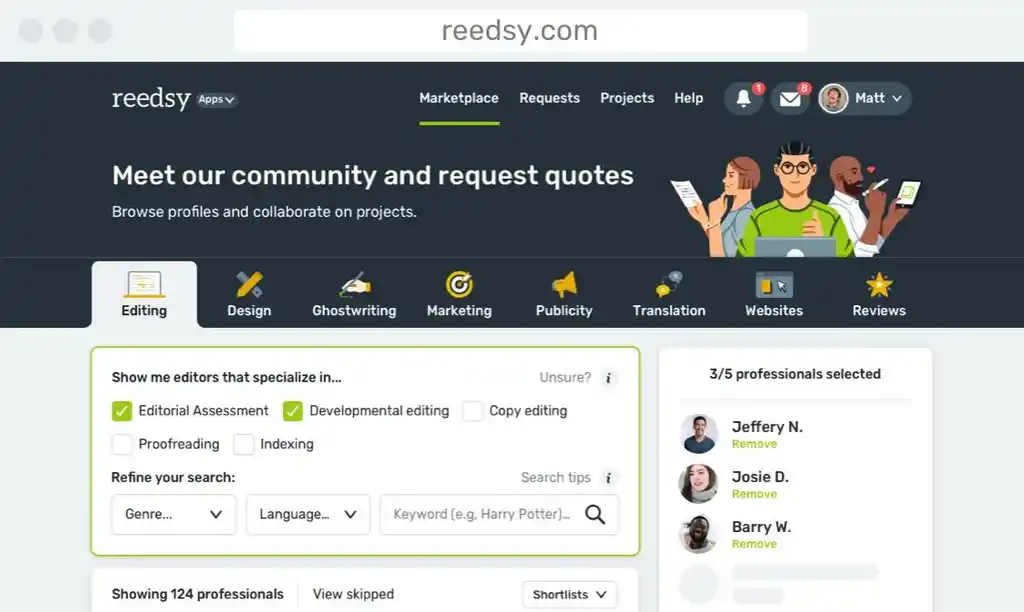
1 million authors trust the professionals on Reedsy. Come meet them.
Enter your email or get started with a social account:
Figure of Speech
Definition of figure of speech.
A figure of speech is a word or phrase that is used in a non-literal way to create an effect. This effect may be rhetorical as in the deliberate arrangement of words to achieve something poetic, or imagery as in the use of language to suggest a visual picture or make an idea more vivid. Overall, figures of speech function as literary devices because of their expressive use of language. Words are used in other ways than their literal meanings or typical manner of application.
For example, Margaret Atwood utilizes figures of speech in her poem “ you fit into me ” as a means of achieving poetic meaning and creating a vivid picture for the reader.
you fit into me like a hook into an eye a fish hook an open eye
The simile in the first two lines sets forth a comparison between the way “you” fits into the poet like a hook and eye closure for perhaps a garment. This is an example of rhetorical effect in that the wording carefully achieves the idea of two things meant to connect to each other. In the second two lines, the wording is clarified by adding “fish” to “hook” and “open” to “eye,” which calls forth an unpleasant and even violent image. The poet’s descriptions of hooks and eyes are not meant literally in the poem. Yet the use of figurative language allows the poet to express two very different meanings and images that enhance the interpretation of the poem through contrast .
Types of Figures of Speech
The term figure of speech covers a wide range of literary devices, techniques, and other forms of figurative language, a few of which include:
Personification
Understatement.
- Alliteration
- Onomatopoeia
- Circumlocution
Common Examples of Figures of Speech Used in Conversation
Many people use figures of speech in conversation as a way of clarifying or emphasizing what they mean. Here are some common examples of conversational figures of speech:
Hyperbole is a figure of speech that utilizes extreme exaggeration to emphasize a certain quality or feature.
- I have a million things to do.
- This suitcase weighs a ton.
- This room is an ice-box.
- I’ll die if he doesn’t ask me on a date.
- I’m too poor to pay attention.
Understatement is a figure of speech that invokes less emotion than would be expected in reaction to something. This downplaying of reaction is a surprise for the reader and generally has the effect of showing irony .
- I heard she has cancer, but it’s not a big deal.
- Joe got his dream job, so that’s not too bad.
- Sue won the lottery, so she’s a bit excited.
- That condemned house just needs a coat of paint.
- The hurricane brought a couple of rain showers with it.
A paradox is a figure of speech that appears to be self-contradictory but actually reveals something truthful.
- You have to spend money to save it.
- What I’ve learned is that I know nothing.
- You have to be cruel to be kind.
- Things get worse before they get better.
- The only rule is to ignore all rules.
A pun is a figure of speech that contains a “ play ” on words, such as using words that mean one thing to mean something else or words that sound alike in as a means of changing meaning.
- A sleeping bull is called a bull-dozer.
- Baseball players eat on home plates.
- Polar bears vote at the North Poll.
- Fish are smart because they travel in schools.
- One bear told another that life without them would be grizzly.
An oxymoron is a figure of speech that connects two opposing ideas, usually in two-word phrases, to create a contradictory effect.
- open secret
- Alone together
- controlled chaos
- pretty ugly
Common Examples of Figure of Speech in Writing
Writers also use figures of speech in their work as a means of description or developing meaning. Here are some common examples of figures of speech used in writing:
Simile is a figure of speech in which two dissimilar things are compared to each other using the terms “like” or “as.”
- She’s as pretty as a picture.
- I’m pleased as punch.
- He’s strong like an ox.
- You are sly like a fox.
- I’m happy as a clam.
A metaphor is a figure of speech that compares two different things without the use of the terms “like” or “as.”
- He is a fish out of water.
- She is a star in the sky.
- My grandchildren are the flowers of my garden.
- That story is music to my ears.
- Your words are a broken record.
Euphemism is a figure of speech that refers to figurative language designed to replace words or phrases that would otherwise be considered harsh, impolite, or unpleasant.
- Last night , Joe’s grandfather passed away (died).
- She was starting to feel over the hill (old).
- Young adults are curious about the birds and bees (sex).
- I need to powder my nose (go to the bathroom).
- Our company has decided to let you go (fire you).
Personification is a figure of speech that attributes human characteristics to something that is not human.
- I heard the wind whistling.
- The water danced across my window.
- My dog is telling me to start dinner.
- The moon is smiling at me.
- Her alarm hummed in the background.
Writing Figure of Speech
As a literary device, figures of speech enhance the meaning of written and spoken words. In oral communication, figures of speech can clarify, enhance description, and create interesting use of language. In writing, when figures of speech are used effectively, these devices enhance the writer’s ability for description and expression so that readers have a better understanding of what is being conveyed.
It’s important that writers construct effective figures of speech so that the meaning is not lost for the reader. In other words, simple rearrangement or juxtaposition of words is not effective in the way that deliberate wording and phrasing are. For example, the hyperbole “I could eat a horse” is effective in showing great hunger by using figurative language. If a writer tried the hyperbole “I could eat a barn made of licorice,” the figurative language is ineffective and the meaning would be lost for most readers.
Here are some ways that writers benefit from incorporating figures of speech into their work:
Figure of Speech as Artistic Use of Language
Effective use of figures of speech is one of the greatest demonstrations of artistic use of language. Being able to create poetic meaning, comparisons, and expressions with these literary devices is how writers form art with words.
Figure of Speech as Entertainment for Reader
Effective figures of speech often elevate the entertainment value of a literary work for the reader. Many figures of speech invoke humor or provide a sense of irony in ways that literal expressions do not. This can create a greater sense of engagement for the reader when it comes to a literary work.
Figure of Speech as Memorable Experience for Reader
By using effective figures of speech to enhance description and meaning, writers make their works more memorable for readers as an experience. Writers can often share a difficult truth or convey a particular concept through figurative language so that the reader has a greater understanding of the material and one that lasts in memory.
Examples of Figure of Speech in Literature
Works of literature feature innumerable figures of speech that are used as literary devices. These figures of speech add meaning to literature and showcase the power and beauty of figurative language. Here are some examples of figures of speech in well-known literary works:
Example 1: The Great Gatsby (F. Scott Fitzgerald)
In his blue gardens men and girls came and went like moths among the whisperings and the champagne and the stars.
Fitzgerald makes use of simile here as a figure of speech to compare Gatsby’s party guests to moths. The imagery used by Fitzgerald is one of delicacy and beauty, and creates an ephemeral atmosphere . However, the likening of Gatsby’s guests to moths also reinforces the idea that they are only attracted to the sensation of the parties and that they will depart without having made any true impact or connection. This simile, as a figure of speech, underscores the themes of superficiality and transience in the novel .
Example 2: One Hundred Years of Solitude (Gabriel Garcia Marquez)
Both described at the same time how it was always March there and always Monday, and then they understood that José Arcadio Buendía was not as crazy as the family said, but that he was the only one who had enough lucidity to sense the truth of the fact that time also stumbled and had accidents and could therefore splinter and leave an eternalized fragment in a room.
In this passage, Garcia Marquez utilizes personification as a figure of speech. Time is personified as an entity that “stumbled” and “had accidents.” This is an effective use of figurative language in that this personification of time indicates a level of human frailty that is rarely associated with something so measured. In addition, this is effective in the novel as a figure of speech because time has a great deal of influence on the plot and characters of the story. Personified in this way, the meaning of time in the novel is enhanced to the point that it is a character in and of itself.
Example 3: Fahrenheit 451 (Ray Bradbury)
A book is a loaded gun in the house next door…Who knows who might be the target of the well-read man?
In this passage, Bradbury utilizes metaphor as a figure of speech to compare a book to a loaded gun. This is an effective literary device for this novel because, in the story, books are considered weapons of free thought and possession of them is illegal. Of course, Bradbury is only stating that a book is a loaded gun as a means of figurative, not literal meaning. This metaphor is particularly powerful because the comparison is so unlikely; books are generally not considered to be dangerous weapons. However, the comparison does have a level of logic in the context of the story in which the pursuit of knowledge is weaponized and criminalized.
Related posts:
- Speech: “Is this a dagger which I see before me
- Speech: Tomorrow, and Tomorrow, and Tomorrow
Post navigation

Figure of Speech: Definition and Examples
Illustration by Hugo Lin. ThoughtCo.
- An Introduction to Punctuation
- Figure of Speech
- Ph.D., Rhetoric and English, University of Georgia
- M.A., Modern English and American Literature, University of Leicester
- B.A., English, State University of New York
In common usage, a figure of speech is a word or phrase that means something more or something other than it seems to say—the opposite of a literal expression. As Professor Brian Vickers has observed, "It is a sad proof of the decline of rhetoric that in modern colloquial English the phrase 'a figure of speech' has come to mean something false, illusory or insincere."
In rhetoric , a figure of speech is a type of figurative language (such as metaphor , irony , understatement , or anaphora ) that departs from conventional word order or meaning. Some common figures of speech are alliteration , anaphora , antimetabole , antithesis , apostrophe , assonance , hyperbole , irony , metonymy , onomatopoeia , paradox , personification , pun , simile , synecdoche , and understatement .
Watch Now: Common Figures of Speech Explained
Just a figure of speech: the lighter side.
Following are a few figures of speech that are a bit tongue in cheek.
Mr. Burns, "American History X-cellent," "The Simpsons," 2010
"Break a leg, everyone" (to a passing employee). "I said break a leg." (The employee then breaks his own leg with a hammer.) "My God, man! That was a figure of speech. You're fired!"
Peter Falk and Robert Walker, Jr., "Mind Over Mayhem," "Columbo," 1974
Lieutenant Columbo: "So you had an hour to kill before you had to get back to the airport."
Dr. Neil Cahill: "I take it you mean to use that phrase, to kill.' You mean that literally."
Lieutenant Columbo: "No, I was just using a figure of speech. I'm not making an accusation."
Jonathan Baumbach, "My Father More or Less," "Fiction Collective," 1982
"What if there were a gun to your head, what would you say?" "Whose gun are you thinking of putting to my head?" "It was just a figure of speech, for God's sake. You don't have to be so literal about it." "It's only a figure of speech when you don't have a gun in your possession."
Carmen Carter et al., "Doomsday World (Star Trek: The Next Generation, No. 12)," 1990
" 'Yes,' said Coleridge. 'The new Commercial Trading Hall....The emptiest building in town, gentlemen. If there are twenty people in it at any given time, I'll eat my tricorder on the spot.' "Data looked at the archaeologist, and Geordi caught the look. 'That's only a figure of speech, Data. She doesn't really intend to eat it.' "The android nodded. 'I am familiar with the expression, Geordi.' "
Metaphor as a Figure of Thought
A metaphor is a trope or figure of speech, in which an implied comparison is made between two unlike things that actually have something in common, as these quotes show.
Ning Yu, "Imagery," "Encyclopedia of Rhetoric and Composition," 1996
"In its broad sense, a metaphor is not only a figure of speech but also a figure of thought . It is a mode of apprehension and a means of perceiving and expressing something in a radically different way. In such a sense, figurative images are not simply decorative but serve to reveal aspects of experience in a new light."
"Teddy Roosevelt and the Treasure of Ursa Major," adapted by Ronald Kidd from the play by Tom Isbell, 2008
"Reaching into her pocket, [Ethel] pulled out the paper, held it in the moonlight, and read, 'Beneath this brilliant metaphor will there treasure be.' "What's a metaphor?' I asked. "Ethel said, 'It's a word that compares one thing to another, to show how they might be alike.' " 'Well,' I said, 'if the metaphor is brilliant, maybe it's the chandelier.' "They stared at me. I don't know why. If you ask me, the clue had seemed pretty obvious. " 'You know,' said Kermit, 'I think Archie is right.' He turned to Ethel. 'I can't believe I just said that.' "
Simile As Another Kind of Comparison
A simile is a figure of speech in which two fundamentally unlike things are explicitly compared, usually in a phrase introduced by like or as, as these quotes demonstrate.
Donita K. Paul, "Two Tickets to the Christmas Ball," 2010
" 'What's a simile?' asked Sandy. She looked to Cora for an answer. " 'When you compare something to something else to get a better picture of it in your head. The clouds look like cotton balls. The edge of the snow shovel is sharp like a knife.' "
Jay Heinrichs, "Word Hero: A Fiendishly Clever Guide to Crafting the Lines That Get Laughs," 2011
"The simile is a metaphor that gives itself away. 'The moon is a balloon': that's a metaphor. 'The moon is like a balloon': that's a simile."
Oxymoron as an Apparent Contradiction
An oxymoron is a figure of speech usually one or two words in which seemingly contradictory terms appear side by side.
Bradley Harris Dowden, "Logical Reasoning ," 1993
"A contradiction in terms is also called an oxymoron. Debates are often started by asking whether a term is an oxymoron. For example, is artificial intelligence an oxymoron? Jokes are often based in oxymorons; is military intelligence an oxymoron?"
Dianne Blacklock, "False Advertising," 2007
"Her husband got hit by a bus. What was Gemma supposed to say? More to the point, what did Helen want to hear? " 'Well,' said Gemma, going to sit on the bed beside Helen, who looked a little taken aback as she shifted to make room. 'You can't have an accident on purpose,' Gemma went on. 'That's an oxymoron. If there was intent, it wasn't an accident.' " 'I guess I'm wondering if there isn't hidden intent in everything we do,' said Helen."
Hyperbole As Exaggeration
Hyperbole is a figure of speech in which exaggeration is used for emphasis or effect.
Steve Atinsky, "Tyler on Prime Time," 2002
"Samantha and I sat in chairs that had been set up near the table. " 'What's hyperbole?' I asked her. " 'It's a fancy way of saying bull.' "
Thomas S. Kane, "The New Oxford Guide to Writing," 1988
"Mark Twain was a master of hyperbole, as he reveals in this description of a tree after an ice storm: '[I]t stands there the acme, the climax, the supremest possibility in art or nature, of bewildering, intoxicating, intolerable magnificence. One cannot make the words strong enough.' "
Understatement as Beauty...or Sarcasm
Understatement, the opposite of hyperbole, is a figure of speech in which a writer or speaker deliberately makes a situation seem less important or serious than it is.
Fiona Harper, "English Lord, Ordinary Lady," 2008
"She read what [Will] was going to say in his eyes before the words left his lips. " 'I love you.' "So simple. No frills, no grandiose gestures. It was so Will. Suddenly, she understood the beauty of understatement."
Steph Swainston, "No Present Like Time," 2006
"[Serein] sat in the doorway, legs out onto the half deck, huddling in his greatcoat. 'Comet,' he said. 'You weren't well.' " 'Is that understatement a new type of sarcasm you're experimenting with?'"
Just a Figure of Speech: The Cliché
A cliché is a trite expression whose effectiveness has been worn out through overuse and excessive familiarity.
David Punter, "Metaphor," 2007
"[I]t is interesting that the phrase 'just a figure of speech' has become a cliché , as if for something to be a figure of speech in some way downgrades it. It may not be going too far to say that there is a certain denial going on in this view; that it is more convenient and comfortable to pretend that there are some speech forms which do not use figures of speech and thus give us access to a solid, incontrovertible perception of the real, in contrast to which the figure of speech is in some way abstracted, lacking in purchase."
Laura Toffler-Corrie, "The Life and Opinions of Amy Finawitz," 2010
"I'm quite sure he doesn't really think you have been abducted by aliens. It was just a figure of speech, like 'Oh, she's just little Miss Sunshine' or 'What a clown.' When you use expressions like that (which I totally never do), it doesn't mean a person is really an inhumanly hot solar ball or that they're a member of the circus. It's not literal."
Further Reading
For more and deeper information on figures of speech, you can explore the following:
- Brief Introductions to 30 Figures of Speech
- Figure of Sound and Figure of Thought
- Literally and Figuratively: Commonly Confused Words
- 100 Awfully Good Examples of Oxymorons
- 100 Sweet Similes
- The 10 Greatest Hyperboles of All Time
- Top 20 Figures of Speech
- The Top 20 Figures of Speech
- The 9 Parts of Speech: Definitions and Examples
- Brief Introductions to Common Figures of Speech
- AP English Exam: 101 Key Terms
- Simile Definition and Examples
- Hyperbole: Definition and Examples
- How Figurative Language Is Used Every Day
- Valentine's Day Language: Learning Idioms, Metaphors, and Similes
- Figure of Thought in Rhetoric
- Figurative vs. Literal Language
- Definition and Examples of Litotes in English Grammar
- 20 Figures of Speech That We Never Heard About in School
- What Is the Figure of Speech Antiphrasis?
- What Are Tropes in Language?
- Dead Metaphor Definition and Examples
- Skip to primary navigation
- Skip to main content
- Skip to primary sidebar
- Skip to footer
KidsKonnect
Reading Comprehension Cause and Effect Context Clues Compare and Contrast
Noun Worksheets Writing Prompts Compound Words Figurative Language
The Wizard of Oz Hans Christian Andersen Types of Writing Text Structure
Literary Devices
Alliteration Hyperbole Metaphor Irony
Subject Verb Agreement Poetry Climax Rhyme
View all reading worksheets
Action Verbs Tragedy Transition Words Phonics
View all writing worksheets
Dramatic Irony Cacophony Anaphora Setting
View all literature worksheets
Abbreviations Transition Words Conclusion Situational Irony
View all literary device worksheets
Women’s History
Inspirational Women Women's History Month First Lady of the US Women's Equality Day International Women's Day
View all Women's History worksheets
American Revolution
American Revolution Patriots & Loyalists Patrick Henry Sons of Liberty
View all American Revolution worksheets
US Constitution US Independence Trail of Tears The Pilgrims
View all US History worksheets
Ancient History
Ancient China Ancient Mayan Ancient Rome Ancient Aztec
View all Ancient History worksheets
World History
Roaring Twenties Industrial Revolution Middle Ages The Renaissance
View all World History worksheets
Famous Wars
World War 1 World War 2 Vietnam War American Civil War
View all Famous War worksheets
Anne Frank Sally Ride Neil Armstrong Christopher Columbus
View all famous figure worksheets
Joe Biden Donald Trump Abraham Lincoln George Washington
View all President worksheets
Roald Dahl Dr Seuss JK Rowling Michael Morpurgo
View all author worksheets
Civil Rights
Rosa Parks Sojourner Truth Medger Evers Martin Luther King
Elvis Presley Johann Sebastian Bach Ella Fitzgerald Wolfgang Mozart
View all musician worksheets
Thomas Edison Albert Einstein Henry Ford Wright Brothers
View all inventor worksheets
Muhammad Ali Michael Jordan Jackie Robinson Jesse Owens
View all athlete worksheets
Nat Turner Ruby Bridges Harriet Tubman Booker T Washington Malcolm X
View all civil rights worksheets
Natural Wonders
River Nile Mount Everest Sahara Desert Mount Etna Ancient Pyramids Amazon River
Landmarks/Sights
Mount Rushmore Statue Of Liberty White House Stonehenge Great Wall of China Santa Fe Trail
New York Texas South Carolina Alaska Nevada Ohio
Australia United Kingdom China Canada Argentina Brazil
Mount Fuji Mississippi River Rocky Mountains Volcano Glacier The Great Barrier Reef
View all natural wonders worksheets
Hoover Dam Bermuda Triangle Leaning Tower Of Pisa Arc De Triomphe Golden Gate Bridge Colosseum
View all landmark worksheets
California Colorado Indiana Florida Washington Georgia
View all US state worksheets
Poland Greece Philippines Japan France India
View all country worksheets
May Day Cinco de Mayo Teachers’ Appreciation Day Mother’s Day Memorial Day Mexican-American War Lewis and Clark The Tea Act of 1773 Haymarket Square Riot Beltane
View all Seasonal worksheets
Social Emotional Learning
Morals and Values Self Management Ethics Depression Relationship Skills Self-Awareneess Self-Esteem Emotions and Feelings Goal-Setting Interpersonal Skills
View all Social-Emotional Learning worksheets
Celebrations
Easter Saint Patrick’s Day Valentines Day Chinese New Year Rosh Hashanah Thanksgiving Flag Day Cinco de Mayo Beginning Of Lent Yom Kippur View all Celebrations worksheets
Remembrance
Pearl Harbor Day Veterans’ Day Memorial Day Battle Of The Somme D-Day 9/11 Anzac Day Martin Luther King Jr. Day International Women’s Day Victoria Day View all Remembrance worksheets
Camels Fox Bears Penguin Wolf Beavers Mountain Lion Red Panda Snow Leopard White Tigers Silverback Gorilla Okapi
View all mammal worksheets
Marine Life
Crabs Starfish Fish Octopus Great White Shark Dolphin Walrus Narwhal Megalodon Shark Killer Whale Beluga Whale Lionfish
View all marine life worksheets
Insects/Invertebrates/Reptiles
Millipede Praying Mantis Ladybug Ants Spider Iguana Chameleon Komodo Dragon Lizard Bearded Dragon Gila Monster Snakes
View all insect worksheets
Eagle Peregrine Falcon Snowy Owl Emu Woodpecker Albatross Swan Quail Bald Eagle Hummingbird Peacock
View all Bird worksheets
Natural World
Avalanche Flood Tsunami Natural Disasters Fossils Ice Age
View all natural world worksheets
Earth Sciences
Water Cycle Global Warming Deciduous Forests Hurricane Sandy Hurricane Katrina Global Warming
View all earth science worksheets
Food Chain Fossils Photosynthesis Cells Ecosystem Plants
View all biology worksheets
Solar System Black Holes Eclipse Stars and Constellations The Moon Comets
View all space worksheets
Chemistry/Physics
Magnetism Graduated Cylinders Solid, Liquid, Gas Gravity Light Sound
View all science worksheets
Kangaroo Horse Bear Lion Lizard Octopus
View all animal worksheets
Addition Sentences Single Digital Addition Two-Digit Addition Three Digit Addition Repeated Addition
View all Addition Worksheets
Ordinal Numbers Cardinal Numbers Rounding Numbers Odd & Even Numbers Comparing Numbers
View all Numbers Worksheets
Counting Money Subtracting Money Change Money Coin Name & Value Calculate Change (Money)
View all Money Worksheets
Number Line Single Digit Subtraction Place Value Subtraction Sentences Input & Output Tables
View all Math Worksheets
Irony Examples and Worksheets
Search for worksheets, download the irony examples and worksheets.
Click the button below to get instant access to these worksheets for use in the classroom or at a home.
Download This Worksheet
This download is exclusively for KidsKonnect Premium members! To download this worksheet, click the button below to signup (it only takes a minute) and you'll be brought right back to this page to start the download! Sign Me Up
Edit This Worksheet
Editing resources is available exclusively for KidsKonnect Premium members. To edit this worksheet, click the button below to signup (it only takes a minute) and you'll be brought right back to this page to start editing! Sign Up
This worksheet can be edited by Premium members using the free Google Slides online software. Click the Edit button above to get started.
Download This Sample
This sample is exclusively for KidsKonnect members! To download this worksheet, click the button below to signup for free (it only takes a minute) and you'll be brought right back to this page to start the download! Sign Me Up
Table of Contents
Irony is a figure of speech and one of the most widely- known literary devices, which is used to express a strong emotion or raise a point.
As defined, Irony is the use of words to convey a meaning that is opposite of what is actually said.
For example, a driver whose license was confiscated by a traffic officer may say “Thank you Officer, now that you have my license I can’t drive”
In this situation, the driver was mad and irritated at what happened. But instead of directly expressing his anger, the driver used Irony i.e. thanking the officer for getting his license.
There are three types of irony. They are:
Verbal Irony
Situational irony, dramatic irony.
It is the use of words to present a meaning that is different from what the speaker says. Almost all the time, the person intentionally and knowingly uses Verbal Irony to be understood as meaning something different to what his or her words’ literal meaning.
Verbal Irony is the easiest to identify among the three types. It is also the most commonly used.
Our previous example is a kind of Verbal Irony. When the driver thanked the traffic officer, he wanted his words to mean that he was not amused at all.
Other examples are:
- After looking at a student’s poor test score, the teacher says, “You will surely finish the year with highest honors”.
- A man tastes his wife’s delicious home- cooked meal and exclaims, “I shall never eat this food ever again”.
- After they kissed, the groom, with a smile on his face, muttered to his bride, “This is the day I will always want to forget”.
Situational Irony happens when what is expected and intended to happen doesn’t take place. Instead, the exact opposite occurs. The result could be either serious or comic.
This type of Irony is used adds more meaning to a situation making it more interesting and thought- provoking.
For example, a man whose house was in the woods put a booby trap to protect him from wild animals. One night, while walking, the man didn’t see the trap. He injured himself.
The booby trap was intended to protect the man but it wounded him instead. This is exactly the contrary of what was expected.
Examples are:
- Dr. Johnson smokes a pack of cigarettes a day.
- Our boss, the owner of a big construction firm, cannot fix his house’s broken ceiling.
- The defence lawyer failed to acquit his son in a case.
Dramatic Irony happens when the audience or readers are aware of something, which the character of a movie or story does not know.
Oftentimes, such character acts or moves in a way, which is contrary or different from what the audience or the readers expect him or her to do.
This type of Irony creates intense feelings such as humor and suspense.
Dramatic Irony is used to convey emotions more intently. It gives the audience or readers a sense of thrill and excitement.
In a horror movie for example, the character enters a dark room while hearing a woman’s voice. The audiences don’t get scared because they knew beforehand that the woman’s voice was just that of the character’s mother.
Other examples include:
- In “Saving Private Ryan” , the group of soldiers were hopeless they could find Private James Ryan alive, but the audience knew from the start that Private Ryan went on to live until his later years.
- The wife believed that her husband died in an airplane crash and but the audience was aware that the husband had survived.
- Readers knew that Caitlyn’s character in the novel “A Song for Caitlin” would eventually die but the other characters never even knew she was sick.
Irony Worksheets
This bundle contains 5 ready-to-use irony worksheets that are perfect to test student knowledge and understanding of what irony is and how it can be used. You can use these irony worksheets in the classroom with students, or with home schooled children as well.
Link/cite this page
If you reference any of the content on this page on your own website, please use the code below to cite this page as the original source.
Link will appear as Irony Examples and Worksheets: https://kidskonnect.com - KidsKonnect, July 11, 2017
Use With Any Curriculum
These worksheets have been specifically designed for use with any international curriculum. You can use these worksheets as-is, or edit them using Google Slides to make them more specific to your own student ability levels and curriculum standards.
Related Resources
KidsKonnect is a growing library of high-quality, printable worksheets for teachers and homeschoolers.
Home Facts Privacy About Blog Contact Terms
Safe & Secure
We pride ourselves on being a safe website for both teachers and students. KidsKonnect uses a secure SSL connection to encrypt your data and we only work with trusted payment processors Stripe and PayPal.

Press ESC to close

Irony Figure of Speech: Let’s Learn about a Significant Aspect of English Grammar

Ironical phrases are said and heard by everyone but do you know what an ironic figure of speech is? Well, these are the sentences that have a fair bit of contradiction between what is said and what it means. These words are used both professionally and personally to create fun, creativity, or different expressions.
Let’s learn about its types along with the examples so that next time you can use them before others or before those who use them to you. It should be grabbed by you perfectly to be magnificent. So, move ahead to the body of the article to find everything about the irony figure of speech.
Also Read: 10 Pronunciations You Should Avoid
What is an Ironic Figure of Speech?
If you want to know about the meaning of Irony, here it is. It is a figure of speech. The irony is one of the most widely- known literary devices, which is used to express a strong emotion or raise a point.
Talking about it more, irony refers to the use of words to convey a meaning that is opposite of what is said. It is used in the sentence to convey something else with some other words. It shows the game and magic of words.
You must reply to a person after understanding what he/she is trying to convey. If you don’t know about irony, it’s likely that you don’t understand the sentence and will not give a perfect response.
So, learn this figure of speech to be wonderful and greater understanding.
Irony Meaning
The irony is a contradiction between words and expressions. It confuses the other person about what you said and what you meant. The irony figure of speech is characterized by contrast and incongruity between reality and appearance. You will think about the words and their actual meaning. Have a look at this example.
For example, if a traffic officer has confiscated a man’s license. Then the man can say, “Thank you, Officer, now that you have my license I can’t drive”.
In the above sentence, the man was heavily angry and irritated by the act of the traffic officer because he had confiscated the man’s license but instead of expressing his anger fairly, he used irony to thank him for the same.
Also Read: 7 Frequently Used English Phrases
Types of Irony
Three types of irony figures of speech are known. This article will give you the meaning of these irony types along with the examples. So, let’s start.
#1. Verbal Irony
The verbal irony is a contrast between what is said and what is meant. It shows the contradiction between words and expressions.
For example:
#. After looking at a student’s poor test score, the teacher says, “You will surely finish the year with the highest honours”. #. A man tastes his wife’s delicious home-cooked meal and exclaims, “I shall never eat this food ever again”. #. After they kissed, the groom, with a smile on his face, muttered to his bride, “This is the day I will always want to forget”.
#2. Situational Irony
Situational irony occurs when the audience or the reader knows more than the character about every event. Talking differently, it refers to what the character thinks is true is incongruous with what the audience knows. Let’s get it perfectly with the help of examples.
Have a look at the irony examples:
#. Dr. Johnson smokes a pack of cigarettes a day. #. Our boss, the owner of a big construction firm, cannot fix his house’s broken ceiling. #. The defence lawyer failed to acquit his son in a case.
Also Read: Why English Fluency is Important in Workspace?
#3. Dramatic Irony
Dramatic irony is the contrast between the actual result of a situation and what was intended or expected to happen. It shows the difference or contradiction between expectations and the outcome.
Here are some irony examples:
#. In “Saving Private Ryan”, the group of soldiers was hopeless they could find Private James Ryan alive, but the audience knew from the start that Private Ryan went on to live until his later years. #. The wife believed that her husband died in an airplane crash, but the audience was aware that the husband had survived. #. Readers knew that Caitlyn’s character in the novel “A Song for Caitlin” would eventually die but the other characters never even knew she was sick.
Also Read: 5 Tricks to Convey Your Message Smartly
Hopefully, this article has provided you with the best learning to develop your English grammar. The irony is most commonly used by English speakers to be diplomatic and professional.
If you want to know more grammar tips, content, and strategies, you should visit the Fluent Life website. The professionals will teach and guide you to be excellent at writing, reading, and speaking English and be quintessentially amazing.
The application is also available by the same name that will help you to gain every possible potential knowledge about the language and its grammar. You must learn about everything to be fluent and worthy.
Leave a Reply Cancel reply
Save my name, email, and website in this browser for the next time I comment.
Share Article:
You might also like

Which English Speaking Course is Best?: Your Ultimate Guide

Is Fluent English Better than Intermediate?: Fluent vs Intermediate

Which English Certificate Course is Best?: A Comprehensive Guide
Other stories, what are modal auxiliary verbs let’s learn the condiments of english and their functions, anaphora figure of speech: know how to use it in english.
- Education Diary
- Advertising
- Privacy Policy
Class Notes NCERT Solutions for CBSE Students
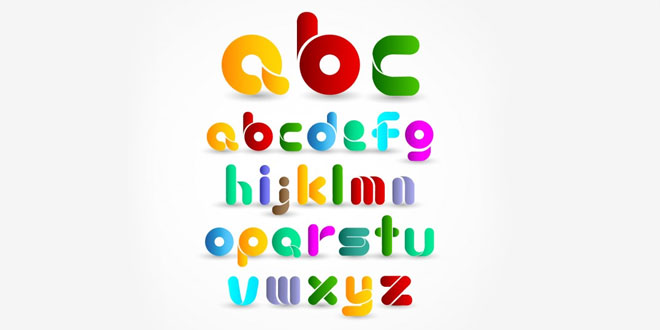
Irony Examples: Figure of Speech For Students
admin February 28, 2019 Figures of Speech 5,374 Views
Irony Examples:
Ironical statements.
- One of the identical twins says to the other, “You’re ugly!”
- I saw a fish drowning.
- Many things can be preserved in alcohol. Dignity is not one of them.
- Never argue with a fool. People might not know the difference.
- Marriage is the leading cause of divorce
- I have been down so long, it looks like up to me.
Coincidental Ironies
- Britain’s biggest dog was named Tiny.
- Two marriage therapists got divorced from each other.
- Most tobacco company executives don’t smoke.
- Titanic, which was touted as “100% unsinkable”, sank on its maiden voyage.
- The supreme irony of life is that hardly anyone gets out of it alive.
- A ninety-eight year old man won the lottery and died the next day.
- My friend, who is an incredibly successful artist and writer, often has dreams that are bland and dull.
- A class on prophecy at a church was postponed due to some unforeseen circumstance
- Do you know that fear for a long word is called Hippopotomonstrosesquippedalio phobia?
- Hitler ‘s Grandmother was Jewish.
- The only reason there are evil people in the world is because there are good people in the world.
- A man died in his living room!
- Canada is owned by Britain, yet half the people there speak French.
- Coffee City is a city in Texas, mostly visited to buy beer.
- My family owns a dairy, I work at a frozen yogurt shop and I just found out I’m lactose intolerant.
- The world’s largest ice cream cone is made by a factory called ‘Tiny Dairies’!
- The owner of a butcher shop is a vegetarian!
- A restaurant called “Hard Times Cafe” has closed down because of the recession!
- The water vendor died of thirst!
- A restaurant with the name “Firewood Cafe” was actually on fire!
- The dictionary entry for “short” is really, really long!
- The only word that you spelled right in this spelling test is “illiterate”.
- “Stand by your Man” is one of the biggest hit songs sung by Tammy Wynette’s who has been married six times in her real life.
- Do you know that there is a song about the phobia of music?
- The White House isn’t white.
- I put on an outfit in the morning and didn’t like it, after spending an hour trying on other clothes, I ended up trying back on the same outfit I started with and wore it for the day.
- A seminar on Global Warming was cancelled due to snow.
- An obese teacher is teaching the class about healthy food or physical exercise!
- A class on “planning and scheduling” was cancelled due to poor planning.
- An atheist sues for religious discrimination
Situational Irony
- Posting a video about how boring and useless Facebook is on Facebook.
- My friend said he can’t go to church because he has a theology test to study for!
- The firehouse burns down.
- The police station was robbed.
- The teacher failed the test.
- The student who didn’t study passed the test.
- The marriage counselor gets a divorce
- “Water, water, everywhere, And all the boards did shrink; Water, water, everywhere, Nor any drop to drink.”
- A girl was going on about how she wouldn’t hurt animals when I noticed she was wearing a leather belt.
- He is a pilot but, is afraid of heights.
Irony Examples In Literature
- “Yet Brutus says he was ambitious; And Brutus is an honorable man” – Julius Caesar.
- Romeo returns to Verona and he finds Juliet drugged, in a death-like sleep. He assumes she is dead and kills himself. When Juliet wakes up and finds him dead, she kills herself with his knife – Romeo and Juliet.
- Ray Bradbury’s book Fahrenheit 451 is consistently on the top 100 list of banned books in the US .
Ironical News
- Libya’s Muammar Gaddafi, the self-styled “eternal revolutionary”, who took power in a coup 42 years ago, is himself being deposed in a revolution.
- A Harvard University fellow, who was studying ethics, was charged with hacking into the Massachusetts Institute of Technology’s computer network to steal nearly 5 million academic articles.
Being a part of speech used on a regular basis, ironies are familiar to many of us. Of course, we never look into whether the usage is correct or not, but it is always better to learn about the different kinds of ironies and their usages. It is very important as there are chances that sometimes you may even get confused with much similar concept of sarcasm. Though both irony and sarcasm appear to be overlapping, both of them are totally different concepts. Hope the examples given in this article helped you to understand the concept ‘irony’ better.
- Stumbleupon
Tags Definition of Figures of Speech Different Figures of Speech Examples and Definition of Figures of Speech Figures of Speech for 10th Class Students Figures of Speech for 11th Class Students Figures of Speech for 12th Class Students Figures of Speech for 9th Class Students Figures of Speech for Students and Children Figures of Speech in English Language Types of Figures of Speech
Related Articles
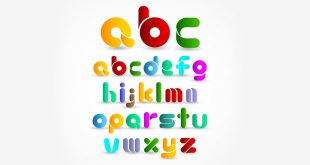
Understatement Examples: Figure of Speech
November 21, 2019
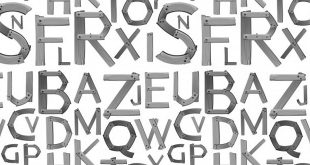
What Are Adjectives: Different Types of Adjectives
Zeugma examples: figure of speech for students, verbal irony examples in literature: figure of speech, simile examples for students and children, oxymoron examples for students and children.
June 5, 2019
Abstract Nouns Examples For Students And Children
A noun can be defined as something that describes a name, place or thing. There …

IMAGES
VIDEO
COMMENTS
Definition of Irony. Irony is a literary device in which contradictory statements or situations reveal a reality that is different from what appears to be true. There are many forms of irony featured in literature. The effectiveness of irony as a literary device depends on the reader's expectations and understanding of the disparity between ...
Definition and Examples of Irony (Figure of Speech) Irony is the use of words to convey the opposite of their literal meaning. Similarly, irony may be a statement or situation where the meaning is contradicted by the appearance or presentation of the idea. Adjective: ironic or ironical.
The term "irony" usually refers to three particular types of irony: Verbal irony is a figure of speech in which the literal meaning of what someone says is different from—and often opposite to—what ... Definitions and examples of 136 literary terms and devices. Instant PDF downloads. Refine any search. Find related themes, quotes, symbols ...
Definition of Irony. As a literary device, irony is a contrast or incongruity between expectations for a situation and what is reality. This can be a difference between the surface meaning of something that is said and the underlying meaning. It can also be a difference between what might be expected to happen and what actually occurs.
It's a figure of speech used to emphasize the contrast in meanings. It's often used as a way of injecting witty humor into someone's speech or writing. There are many English expressions that epitomize verbal irony. Here are a few: • "Fat chance!". • "Clear as mud". • "As soft as concrete".
Learning the figures of speech can help you make your writing a lot more interesting and descriptive. In this article, you will be introduced to the meaning and definition of irony, how it is formed and how it can be used. Also, check out the examples given for a clear idea of how irony works. Table of Contents. What Is Irony? - Meaning and ...
Irony (pronounced 'eye-run-ee') is when there are two contradicting meanings of the same situation, event, image, sentence, phrase, or story. In many cases, this refers to the difference between expectations and reality. For example, if you go sight-seeing anywhere in the world today, you will see crowds of people who are so busy taking ...
dramatic irony. accismus. verbal irony. sarcasm. irony, linguistic and literary device, in spoken or written form, in which real meaning is concealed or contradicted. That may be the result of the literal, ostensible meaning of words contradicting their actual meaning ( verbal irony) or of a structural incongruity between what is expected and ...
Irony is a figure of speech in which there is a contradiction of expectation between what is said and what is really meant. It is characterized by an incongruity, a contrast, between reality and appearance. An example of irony is when a fire station burns down while the firefighters are responding to a call at a neighboring building.
Here's a quick and simple definition: Verbal irony occurs when the literal meaning of what someone says is different from—and often opposite to—what they actually mean. When there's a hurricane raging outside and someone remarks "what lovely weather we're having," this is an example of verbal irony. Some additional key details about ...
Irony Irony Definition. Irony is a form of the figure of speech in which the person delivering the ironic statement says something which is completely opposite to what they mean or what the reality of the situation is. Irony can also be used to set the tone of a situation without the use of any speech at all. Irony can be used in a sarcastic sense to display the opposite meaning of what is ...
As irony is a very common device of figurative literature, there are different types of irony. Verbal irony literary definition and examples. Verbal irony is the most common type of irony that a reader will come across when examining literature. In this type of irony, a character or speaker in the narrative will say or do something that is the ...
A figure of speech is a word or phrase using figurative language—language that has other meaning than its normal definition. In other words, figures of speeches rely on implied or suggested meaning, rather than a dictionary definition. We express and develop them through hundreds of different rhetorical techniques, from specific types like ...
Definition of Irony. Irony is a figure of speech where words are used in a way that their intended meaning is different from their actual meaning. It may also be a situation that ends up in quite a different way than what is generally anticipated. In simple words, it is a difference between the appearance and the reality. The Purpose of Irony
Here's a quick and simple definition: A figure of speech is a literary device in which language is used in an unusual—or "figured"—way in order to produce a stylistic effect. Figures of speech can be broken into two main groups: figures of speech that play with the ordinary meaning of words (such as metaphor, simile, and hyperbole ), and ...
Verbal Irony: 9 Examples that Will Make You Smirk. Verbal irony is a figure of speech in which the literal meaning of what someone is saying is different from what they really mean. For example, someone saying "Just what I needed", after spilling coffee on their shirt on the way to an important meeting. It is often used to make a point or ...
Updated on July 25, 2018. Verbal irony is a trope (or figure of speech) in which the intended meaning of a statement differs from the meaning that the words appear to express. Verbal irony can occur at the level of the individual word or sentence ("Nice hair, Bozo"), or it may pervade an entire text, as in Jonathan Swift's "A Modest Proposal."
Figure of speech is a powerful tool to enhance the meaning and expression of language. It can create vivid images, emphasize emotions, and convey messages in different ways. In this webpage, you will find the definition and a list of various types of figure of speech, such as metaphor, simile, personification, hyperbole, and more. You will also see how they are used in literature by famous ...
In common usage, a figure of speech is a word or phrase that means something more or something other than it seems to say—the opposite of a literal expression. As Professor Brian Vickers has observed, "It is a sad proof of the decline of rhetoric that in modern colloquial English the phrase 'a figure of speech' has come to mean something false, illusory or insincere."
Irony is a figure of speech and one of the most widely- known literary devices, which is used to express a strong emotion or raise a point. As defined, Irony is the use of words to convey a meaning that is opposite of what is actually said. For example, a driver whose license was confiscated by a traffic officer may say "Thank you Officer ...
The irony is a contradiction between words and expressions. It confuses the other person about what you said and what you meant. The irony figure of speech is characterized by contrast and incongruity between reality and appearance. You will think about the words and their actual meaning. Have a look at this example.
Irony Examples In Literature. "Yet Brutus says he was ambitious; And Brutus is an honorable man" - Julius Caesar. Romeo returns to Verona and he finds Juliet drugged, in a death-like sleep. He assumes she is dead and kills himself. When Juliet wakes up and finds him dead, she kills herself with his knife - Romeo and Juliet.